The province of Sichuan in central/western China is famous for its Panda´s, Spicy food and some of the most breathtaking scenery in the whole of China.
But Sichuan is also maybe the best province in China to explore to the adventures traveller that wants to get off the beaten path in China and experience some of the most authentic Tibetan Culture still left in the country.
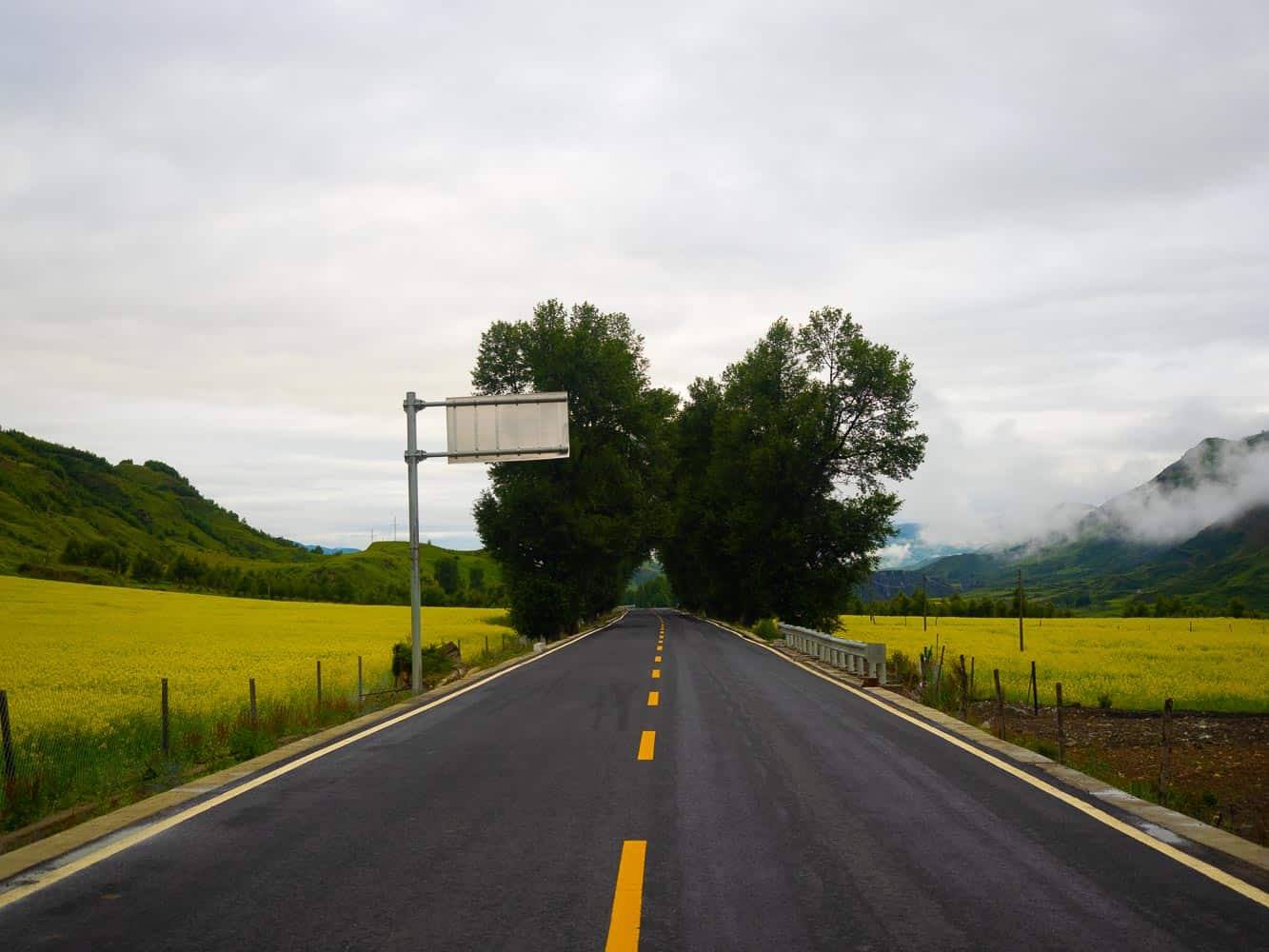
Driving through an endless sea of raps fields in western Sichuan
And often can visiting remote villages be just as rewarding as visiting the famous sites in this part of China.
Just to be sure, even when China is turning into a cashless country with card payment and Wepay being the main way to pay so is this part of China still cash is king, but with few ATM´s working with foreign bank cards in this part of China, so be sure to bring enough cash before you start your trip around western Sichuan.
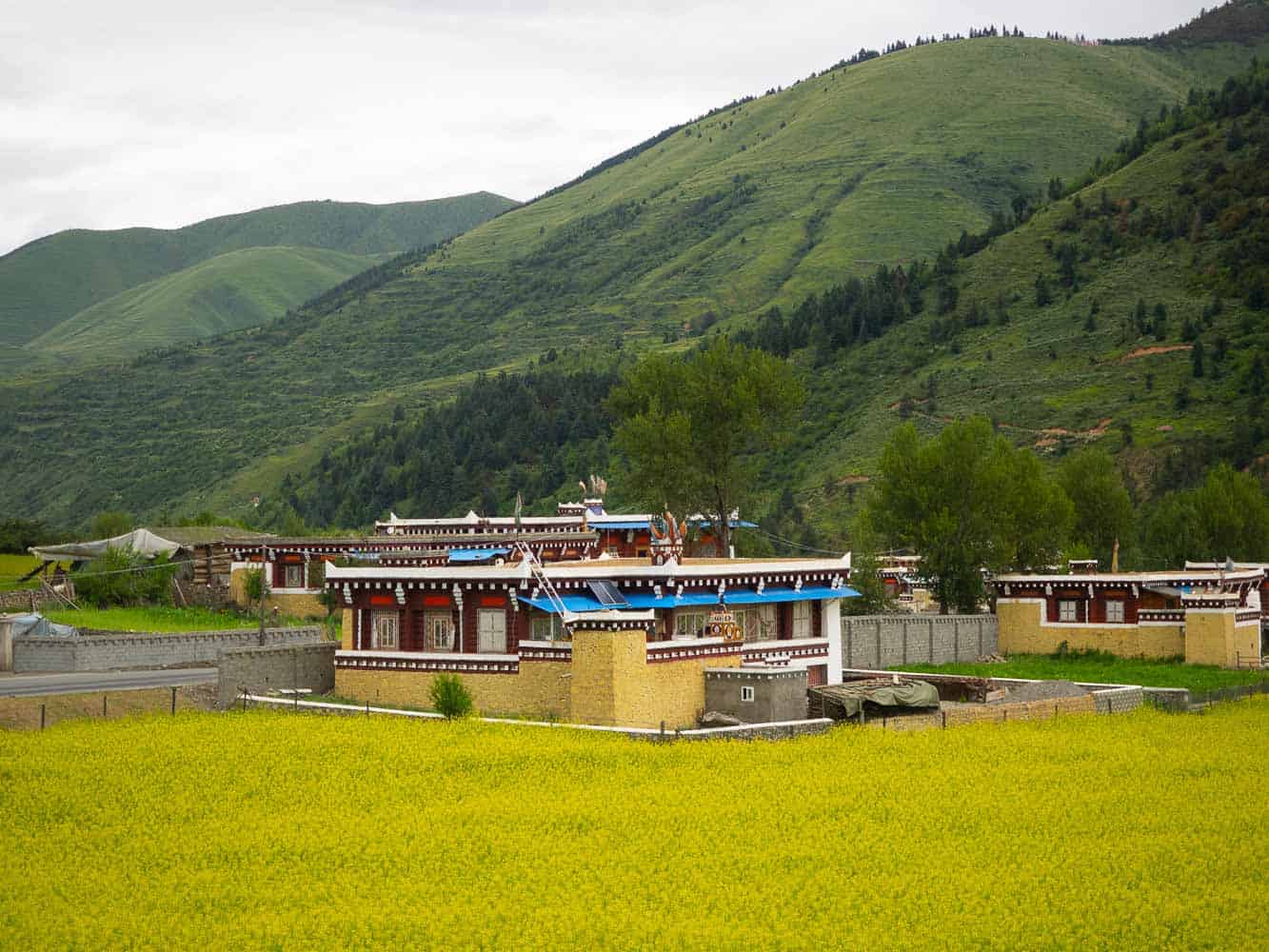
Local house and yellow raps fields in the western part of Sichuan
The Sichuan province can be divided into four different regions, with both the Ganzi and Aba Prefecture being Tibetan autonomous prefecture and the two most interesting parts of Sichuan for tourists.
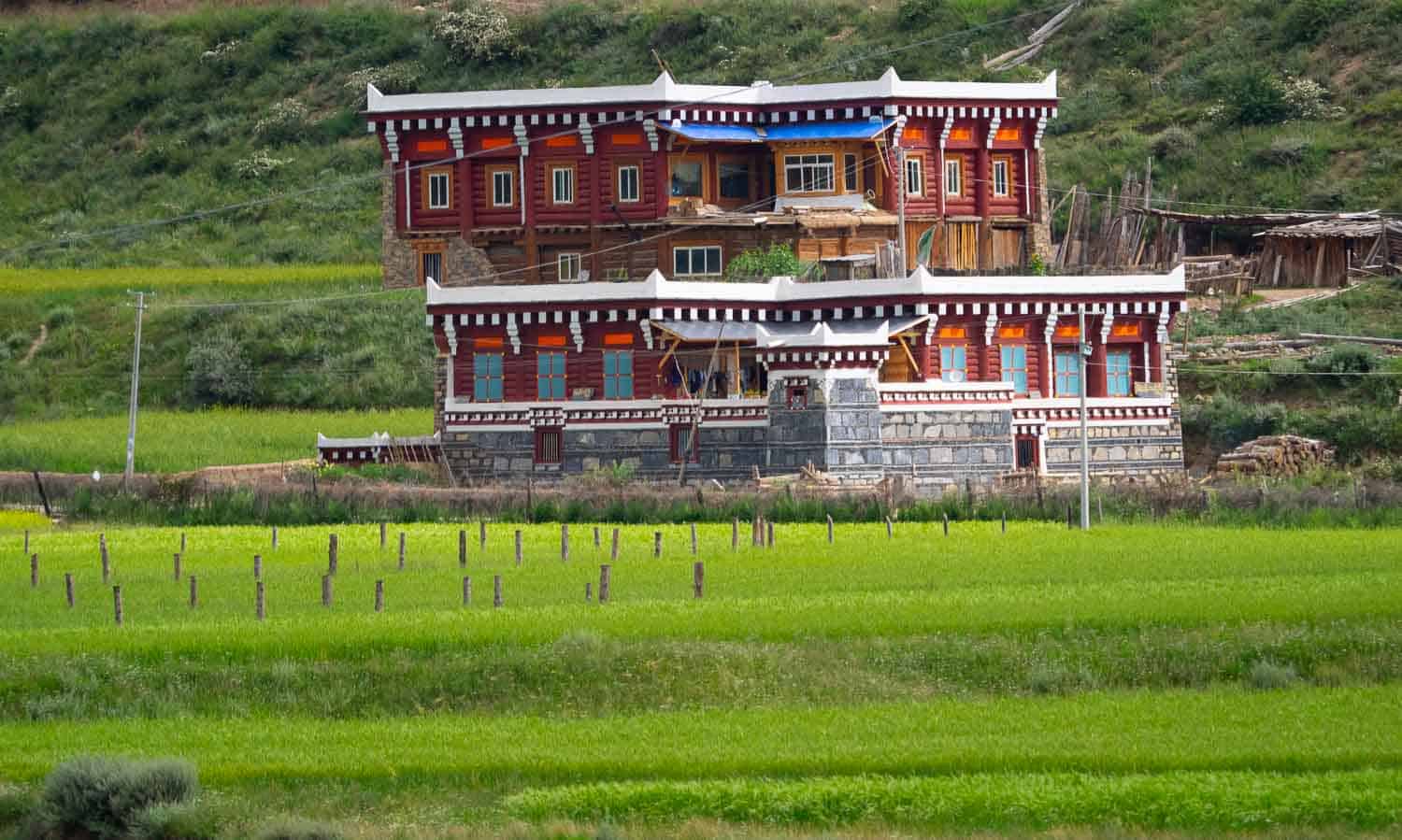
Traditional house in this part of Sichuan
Travelling around the western part of Sichuan was, for years, uncounterable with long journeys on horrible roads, but over the last couple of years have some of the biggest road projects in China been done right here in the western part of Sichuan, cutting travelling time some places almost in half.
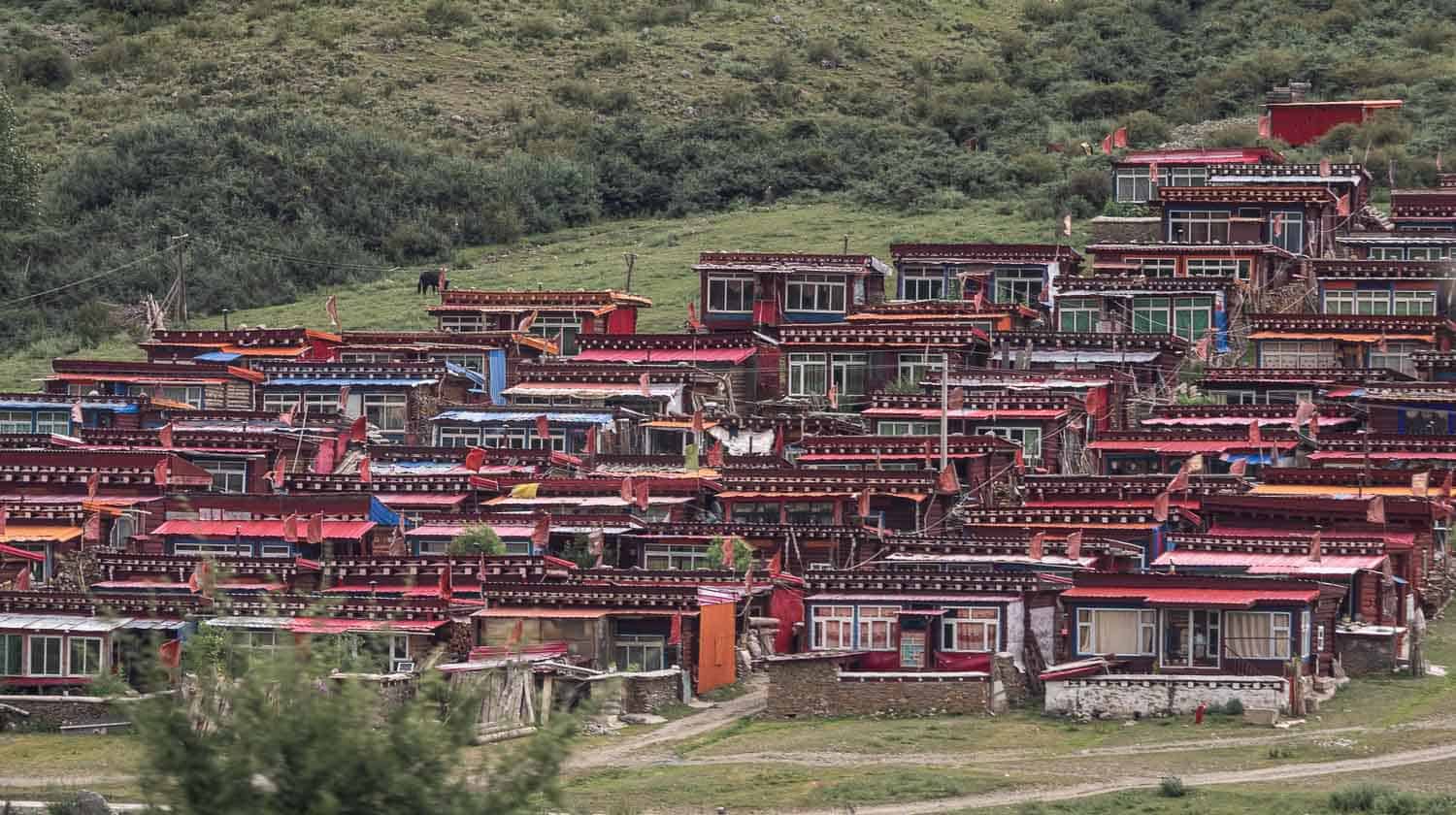
Traditional villages along the way
Almost no matter where you will start or finish your trip in Sichuan so will probably Chengdu, the largest city in Sichuan, be your launching and ending point for your trip in this part of China.
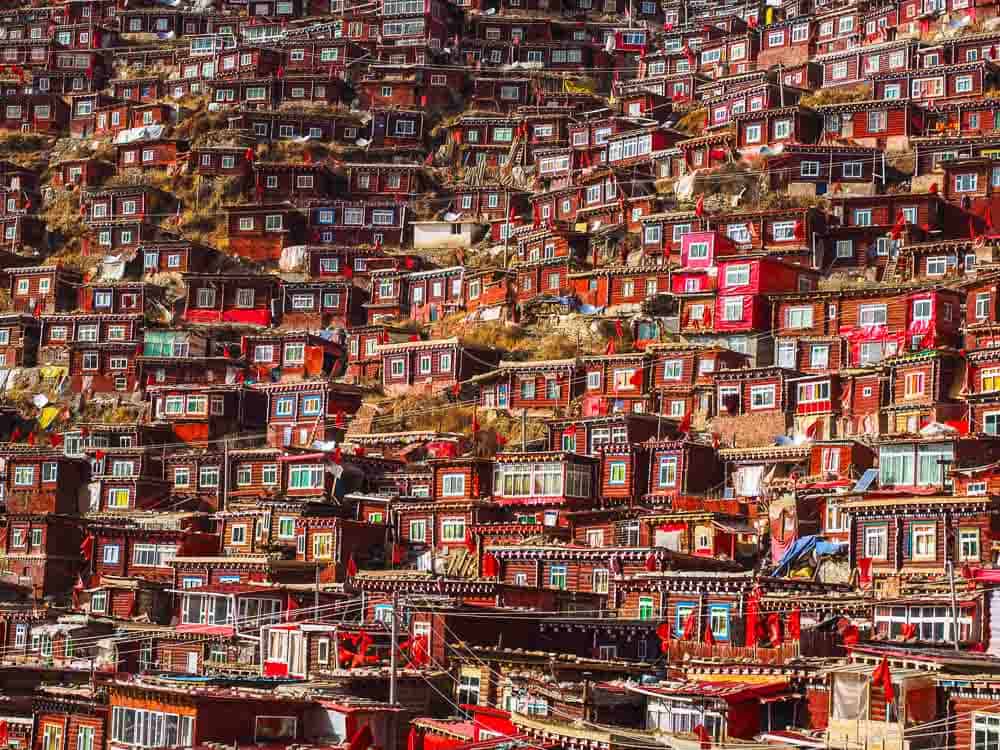
Local Buddhist houses in Lurang Gar
Before travelling into the western part of Sichuan, should you be aware that most part of it lies above 4000m with some roads going above 5000m, so altitude sickness is a big risk in this area, so you should be aware of the symptoms for altitude sickness before you start your travel in this part of Sichuan.
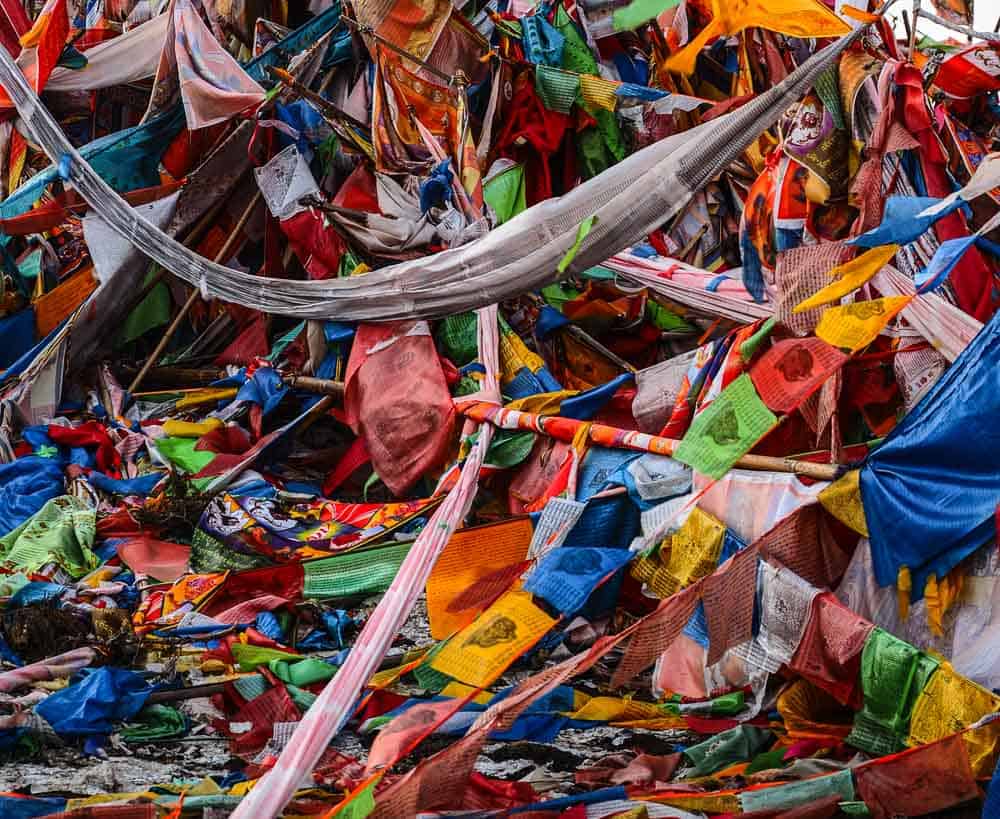
Millions of Prayer flags
Western Part of Sichuan can also be closed for foreigners on short notice; if that happened, will you be sent back to Chengdu very fast by the local authorities.
Off The Beaten Path Places To Visit In Sichuan
Ganzi
Ganzi also often written Garze is an important town in western Sichuan and the main transportation hub in the area, while the places if often just used as a place to change transportation to travellers further into the Tibetan parts of Sichuan.
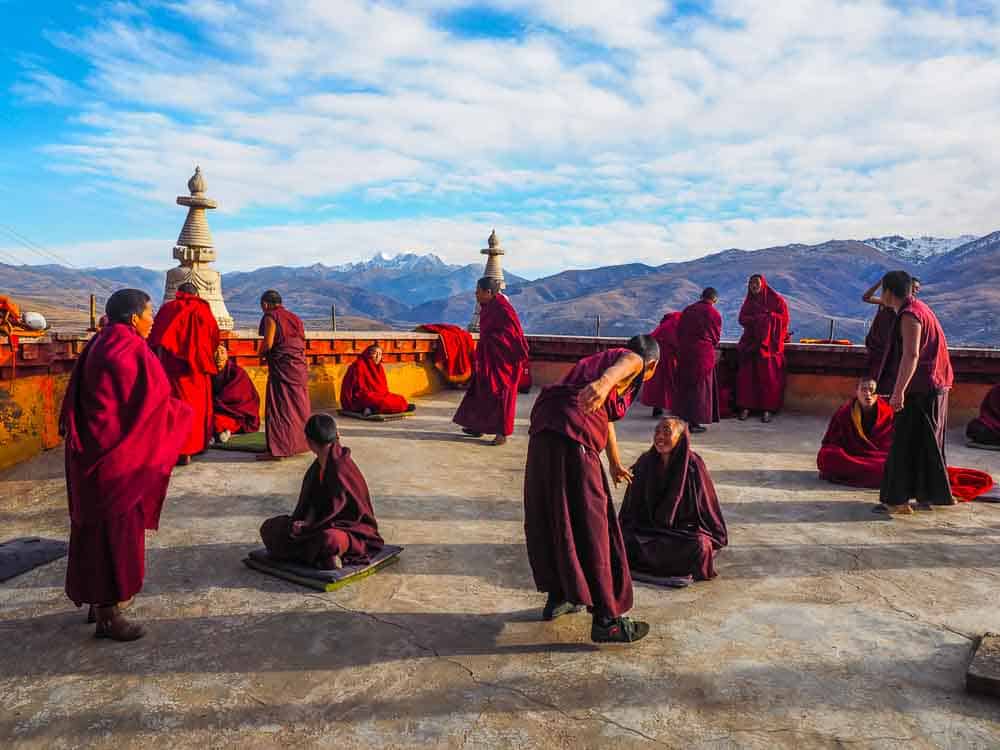
Tibetan monks during a study in Ganzi
Even tho most foreigners only spend a night in Ganzi to catch an early morning bus the next morning, so is it well worth a stop for a day or two on its own. It´s worth exploring the local Tibetan Monasteries and the surrounding Grasslands and Mountains around Ganzi.
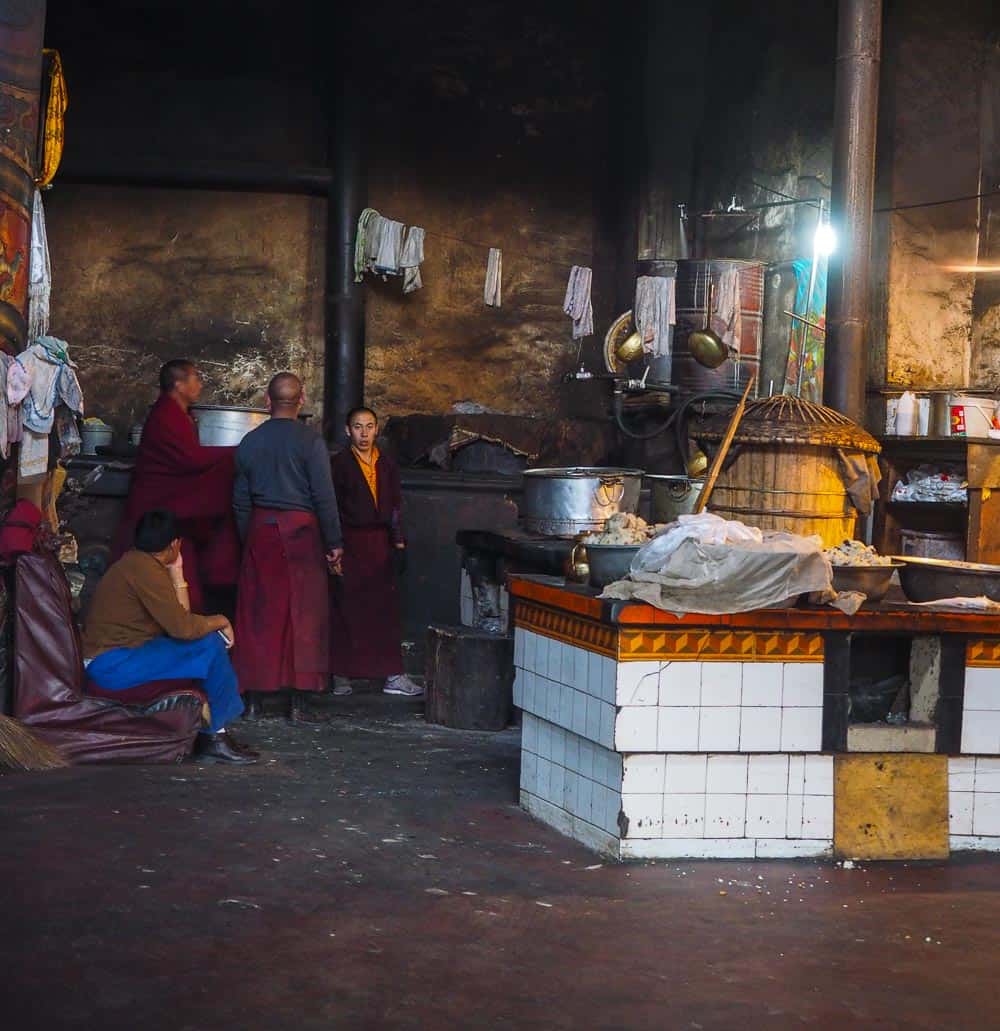
Food getting prepared in the kitchen.
Ganzi is also the last larger town in this part of Sichuan, so it´s worth withdrawing some extra money here or doing laundry. Plus, there´s a couple of good coffee shops with international craft beer here if you want to just have a rest day.
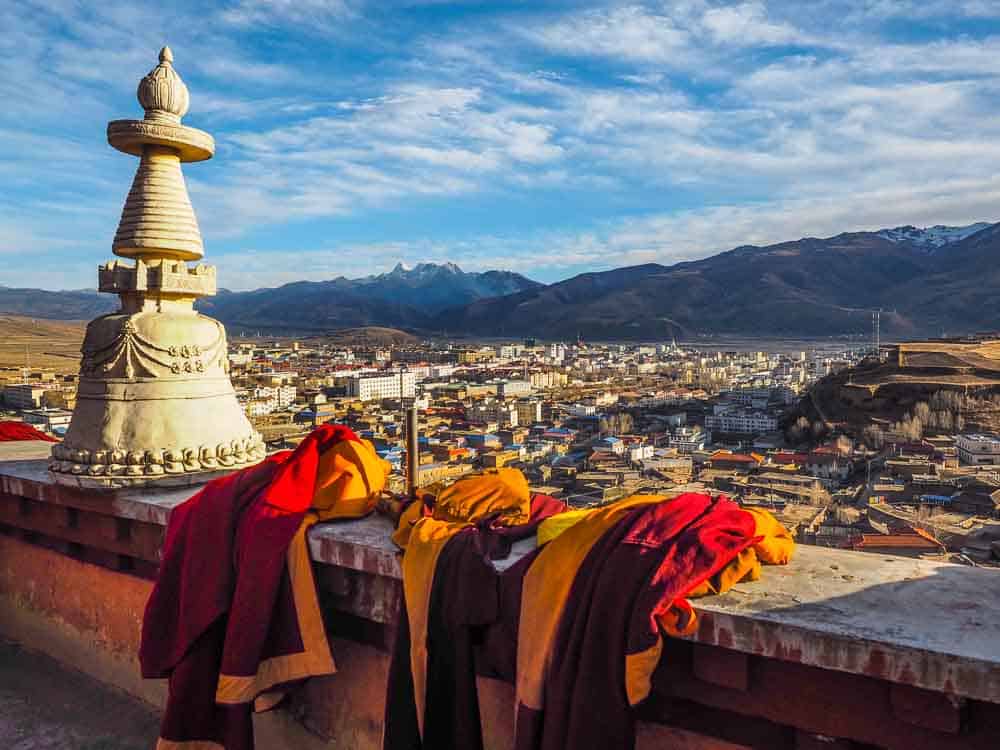
Looking out over Ganzi and the surrounding mountains. Some Buddhist monks left their robes.
There are a few Tibetan Monasteries in Ganzi, all worth a visit.
But the 540-year-old Kandze/Gaze Monastery, which overlooks Ganzi, might be the most interesting one together with the Den Gompa in the southern part of Ganzi.
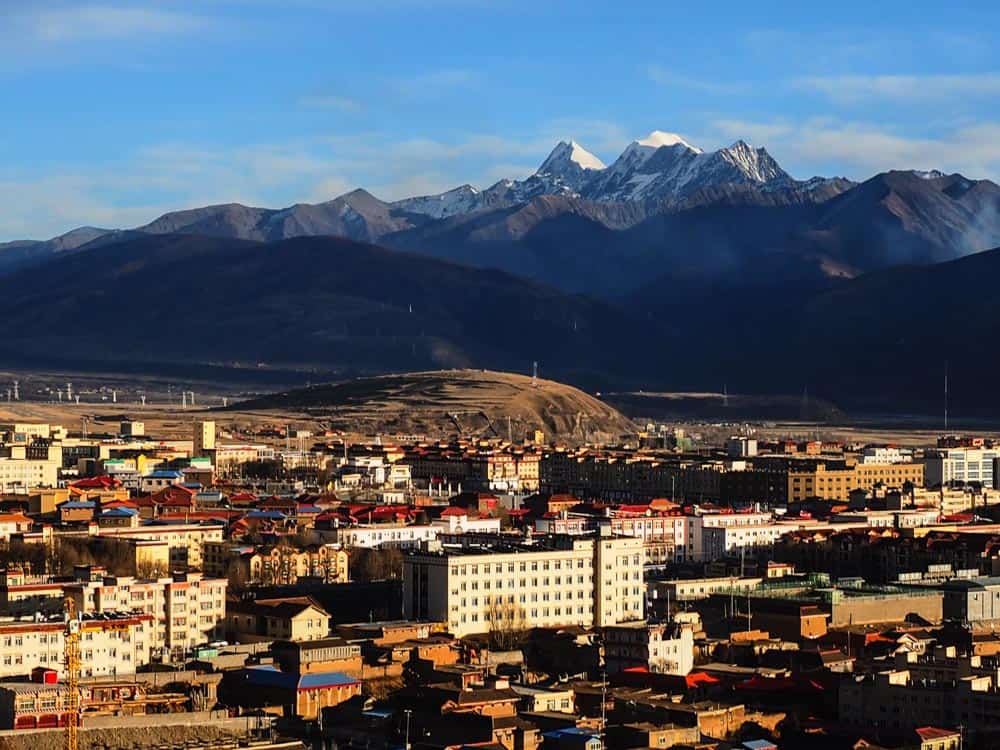
Ganzi might not be the prettiest city in China, but the surrounding landscape is beautiful.
Dege And The Largest Buddhist Scriptures Printing House
Dege is the last town in Sichuan before you reach Tibet itself, and if you want to travel further will you have to book a tour with a guide and guide and get you will have to obtain the Tibet Permit.
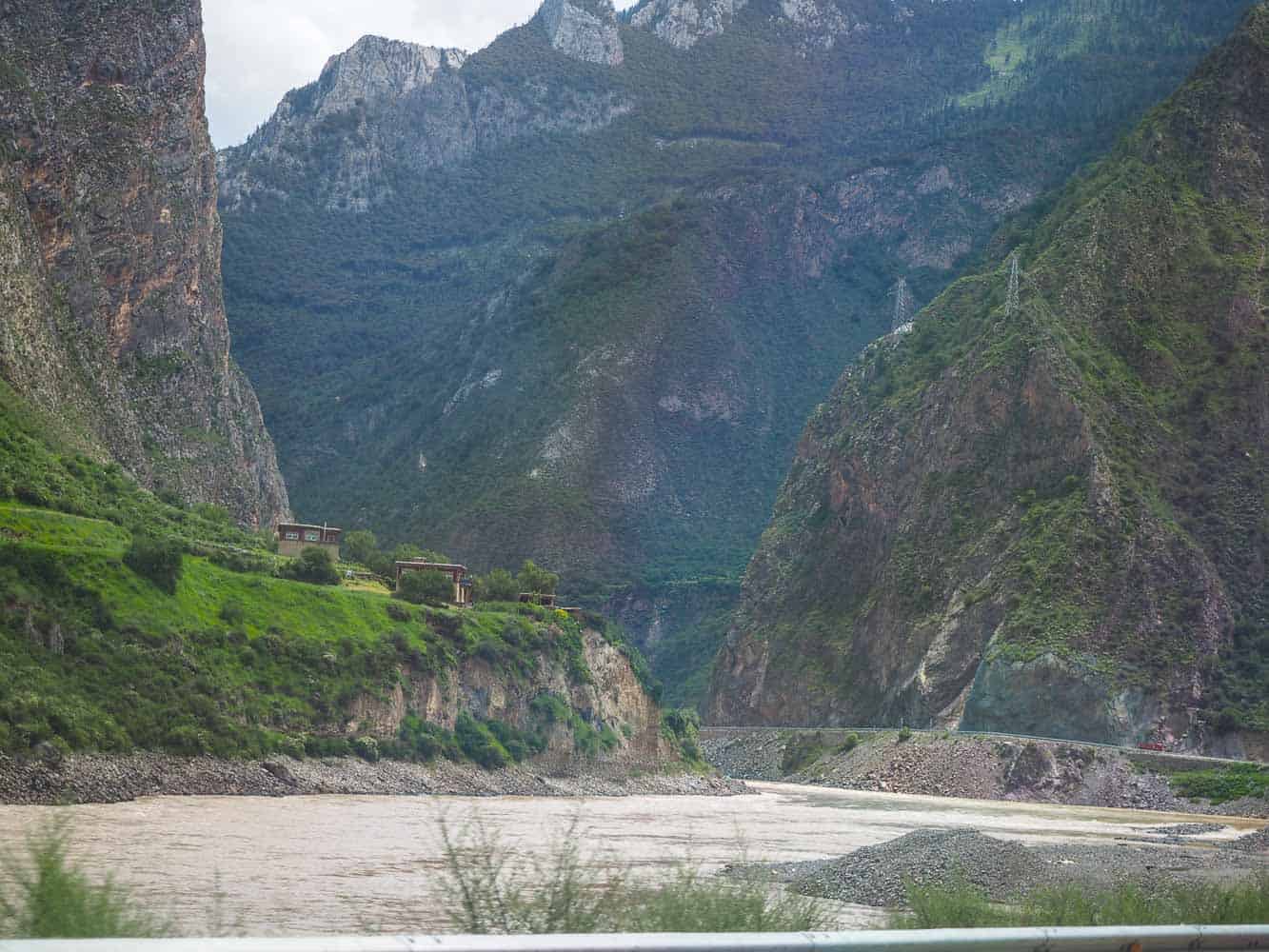
The road to Dege from Baiyü, across the river, is Tibet, as closes as you can get without a tour and a permit.
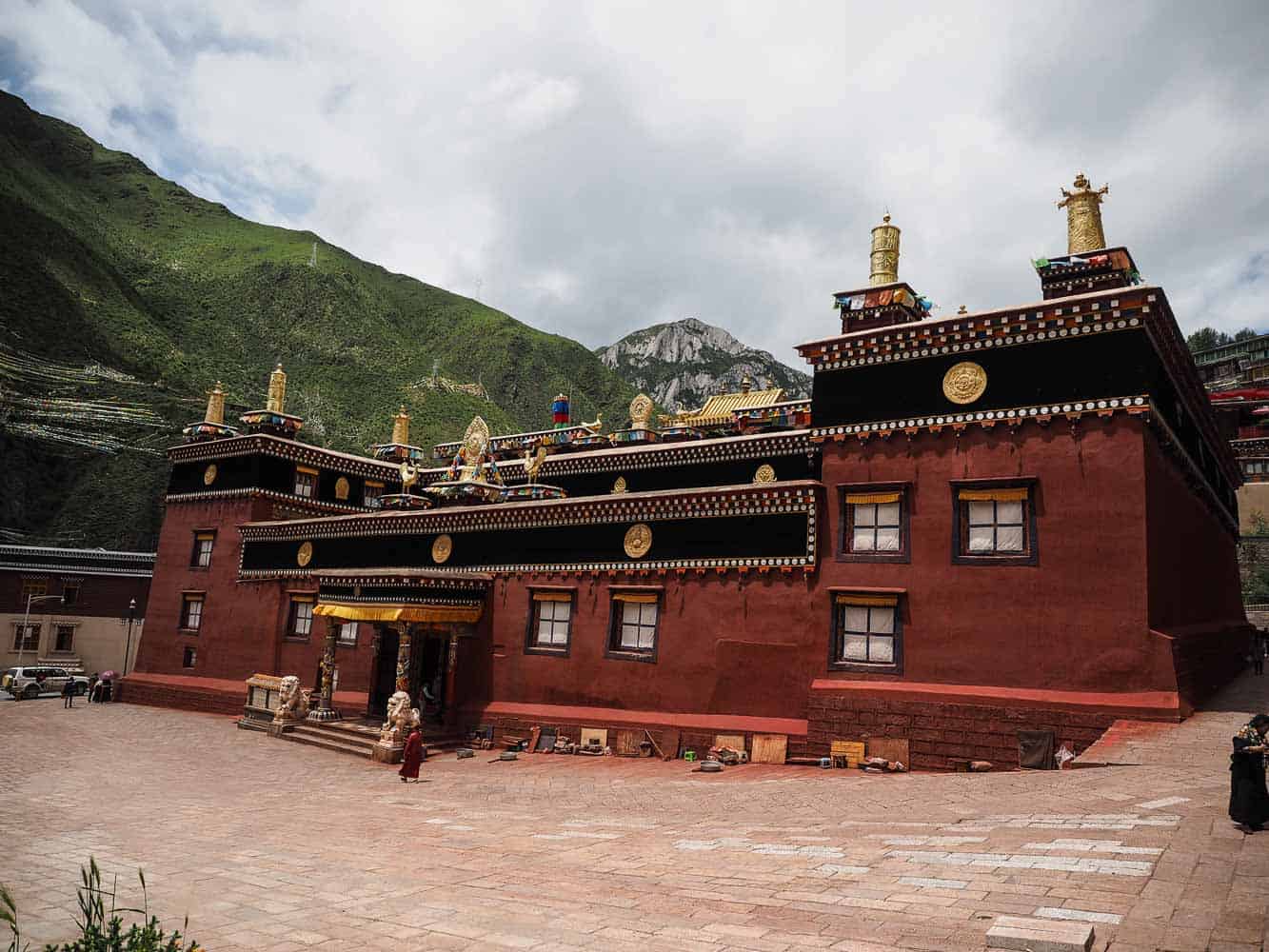
Bakong Scripture Printing Press in Dege far western Sichuan
Dege is one of the most important places in all of Tibetan culture, the Bakong Scripture Printing Press (also known as the Dege Parkhang Sutra-Printing House), dating back to 1729, home to the most important Tibetan print press.
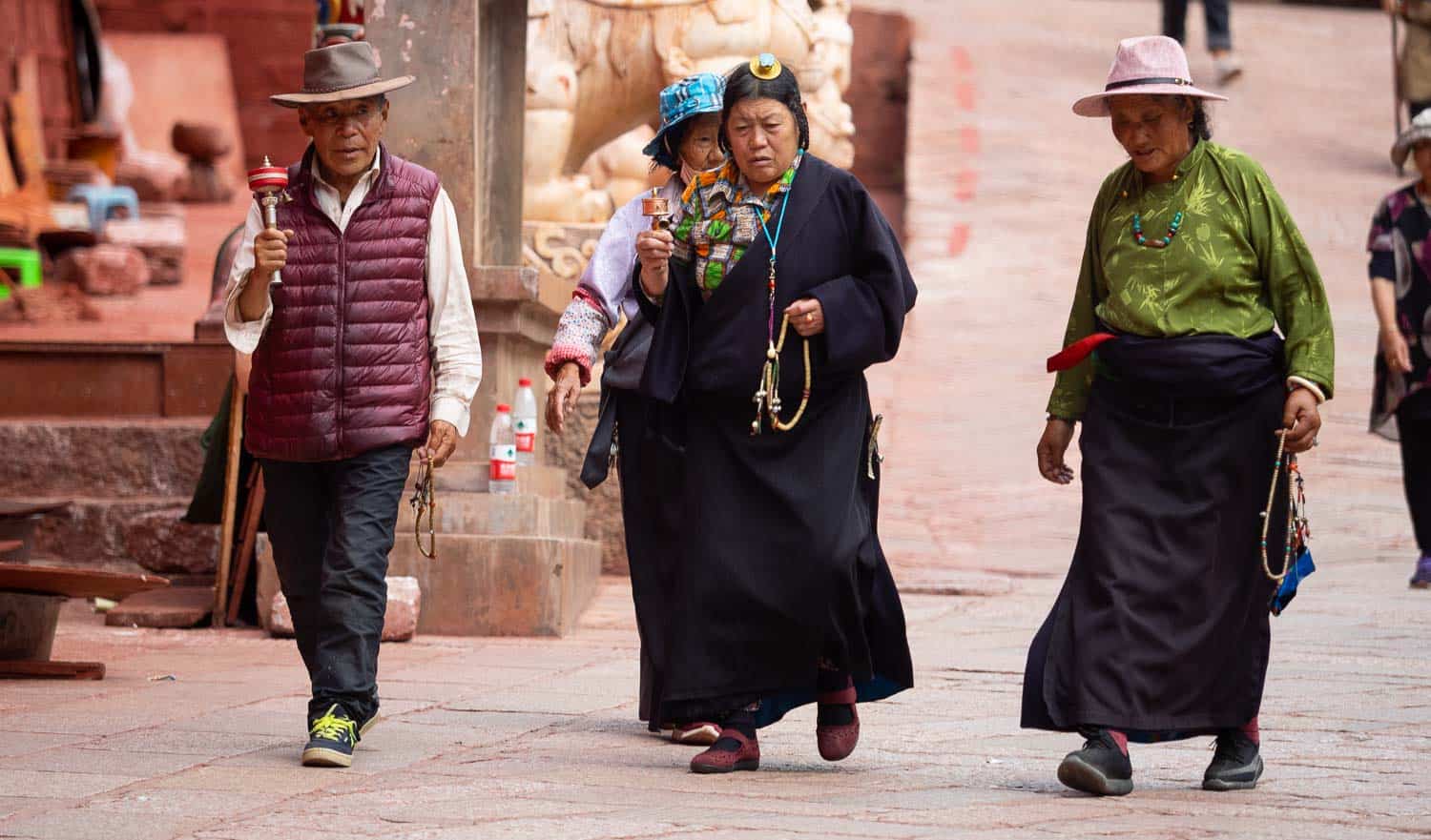
Locals in Dege
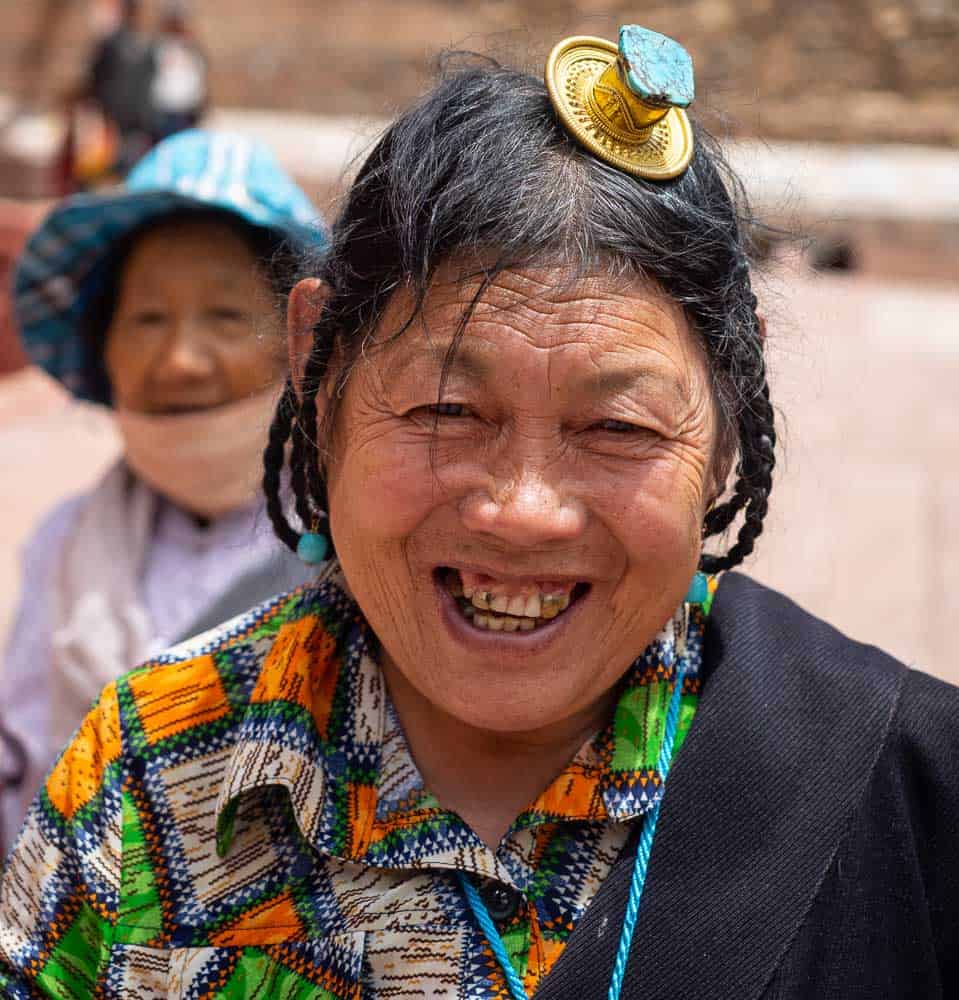
Local Tibetan woman in Dege
The printing was closed down during the Chinese cultural revolution between 1958 to 1979, but have except those 21 years been operation nonstop since 1729.
The main hall in the Dege Monastery is still printing that still uses traditional woodblock printing methods that they have done for hundreds of years; there are no modern machines and equipment here.
The most experienced pairs of Tibetan printers working together to ink and press more than 2500 prints each day
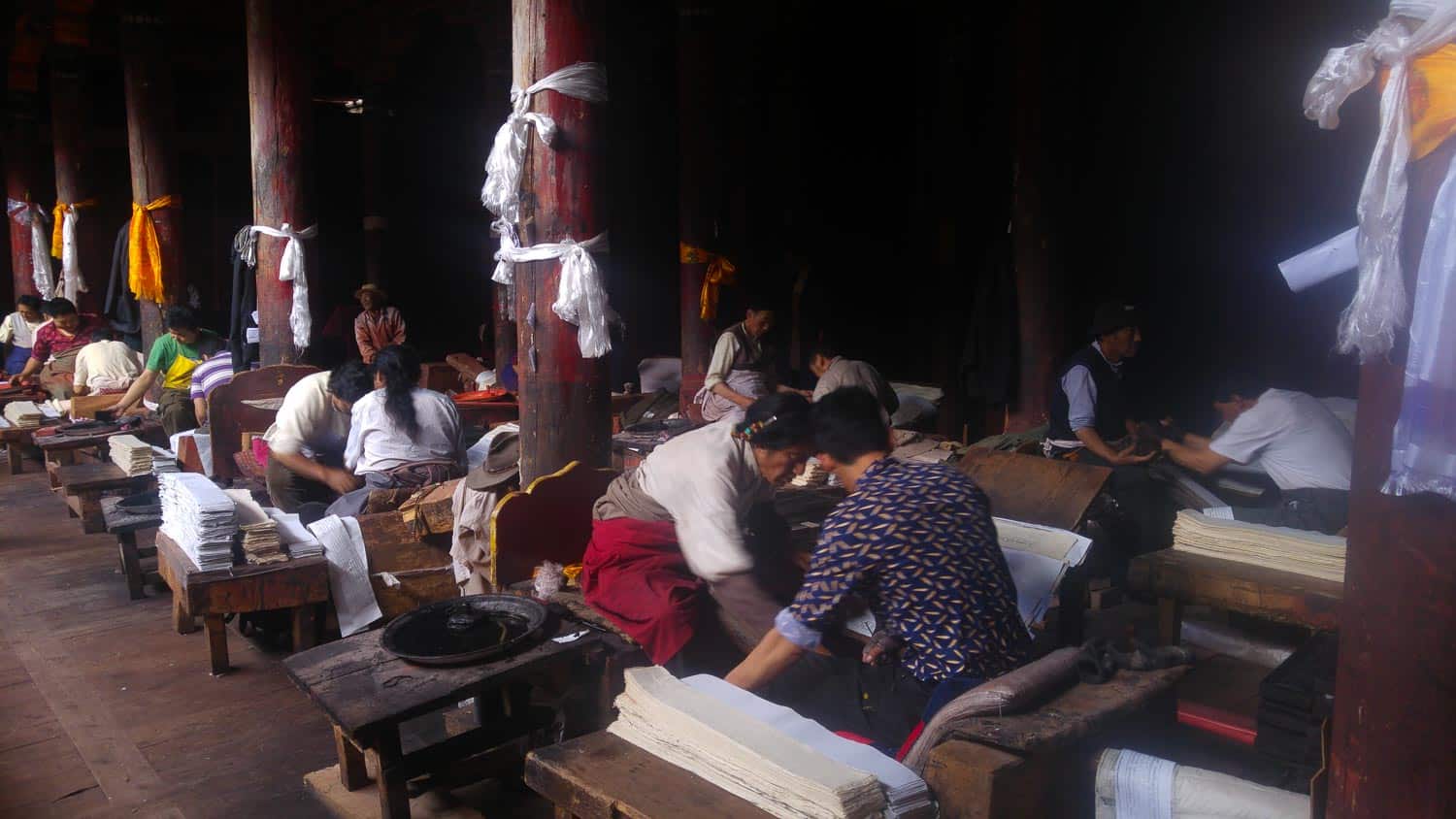
Traditional printing in Dege
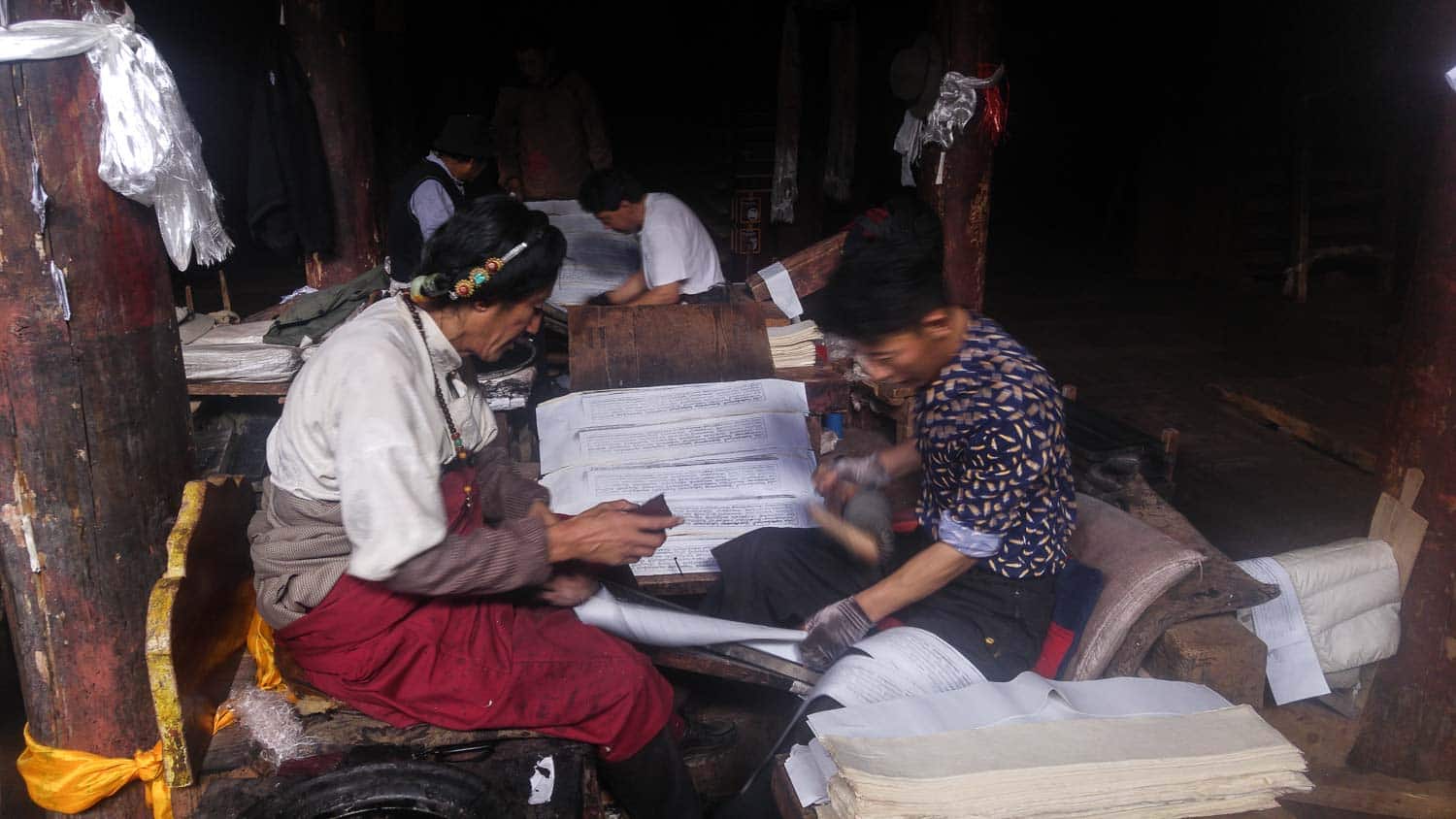
Printing in Dege
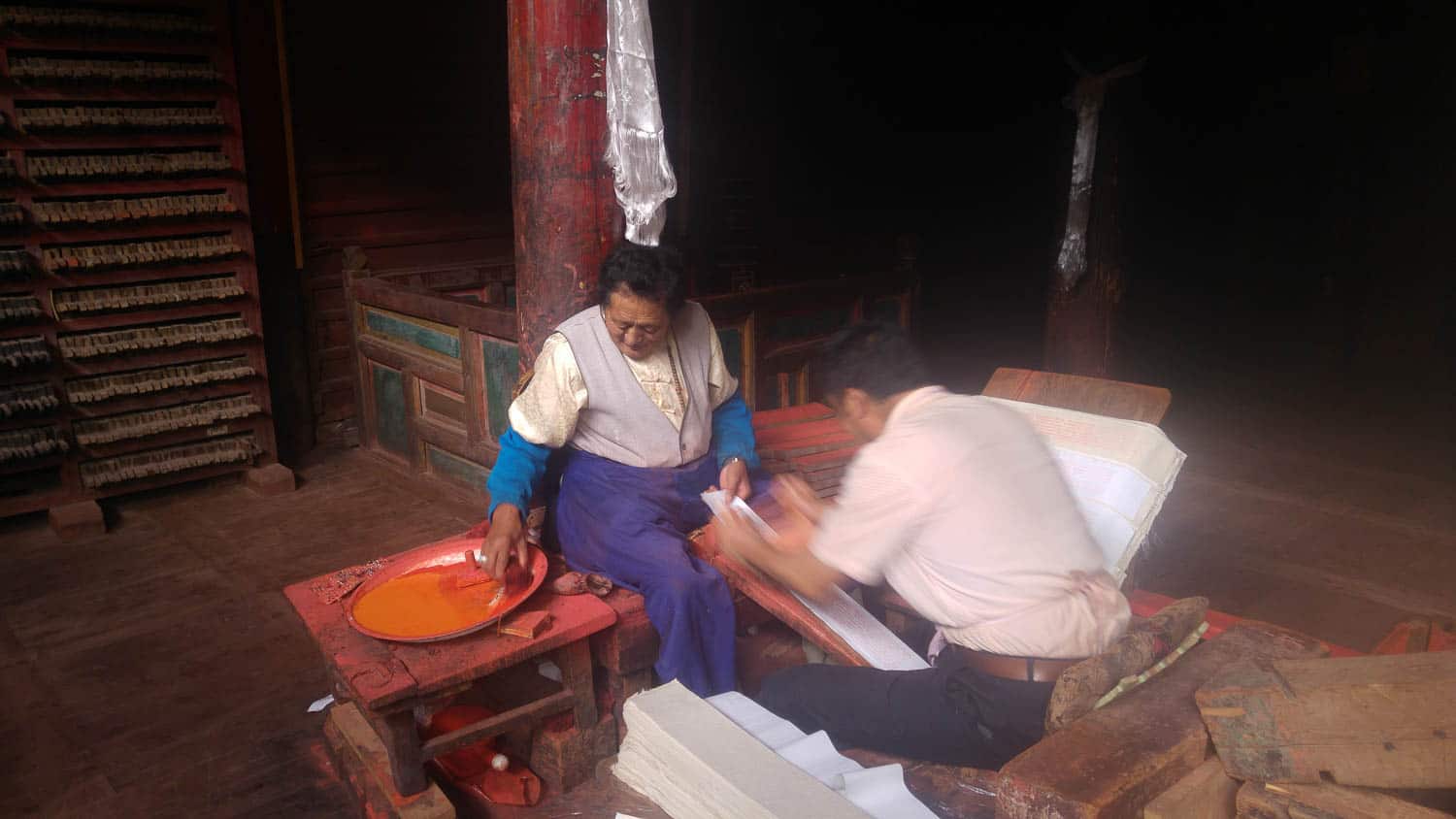
Printing is done in the traditional way.
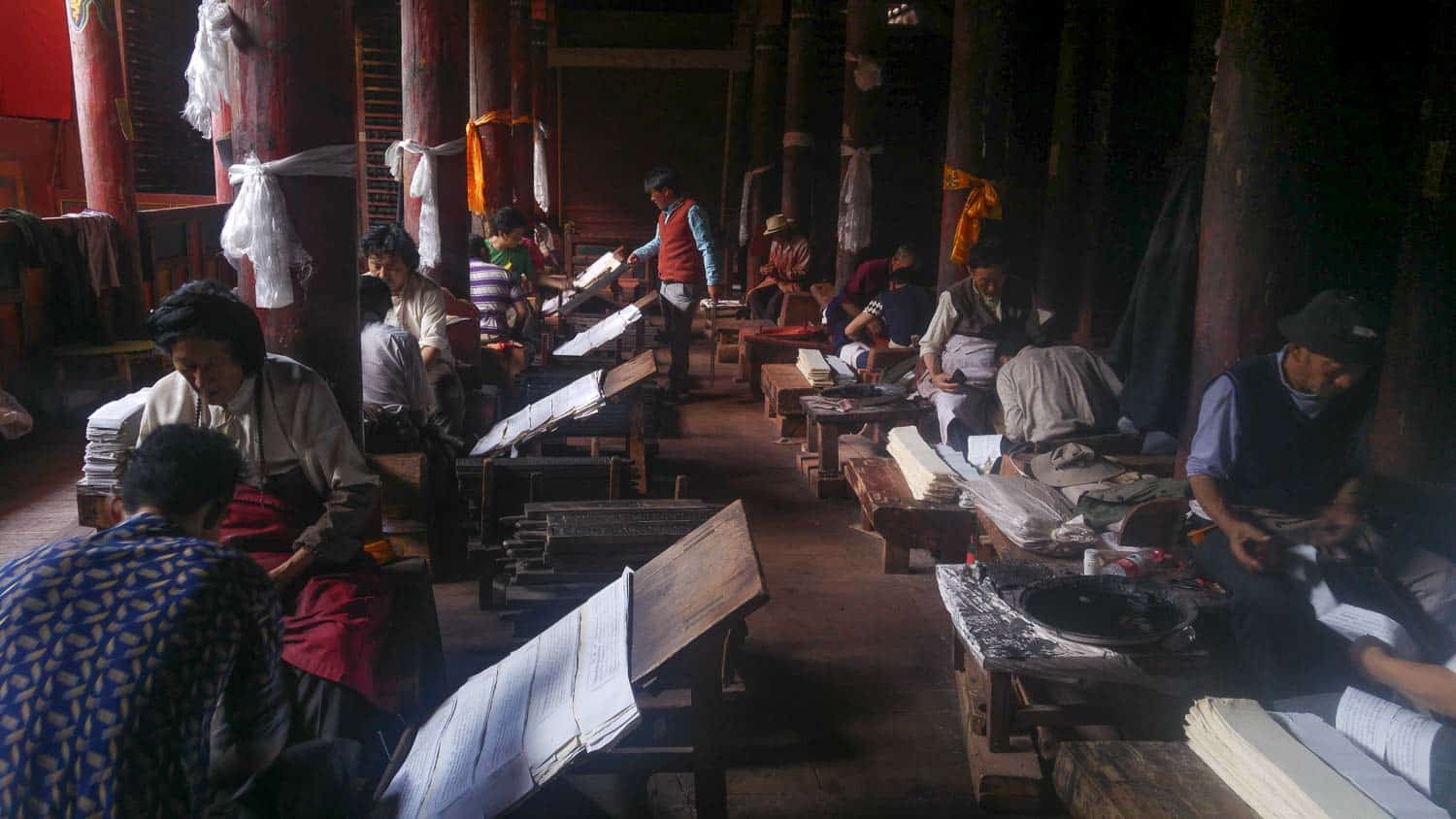
The main printing hall in Bakong Scripture Printing Press
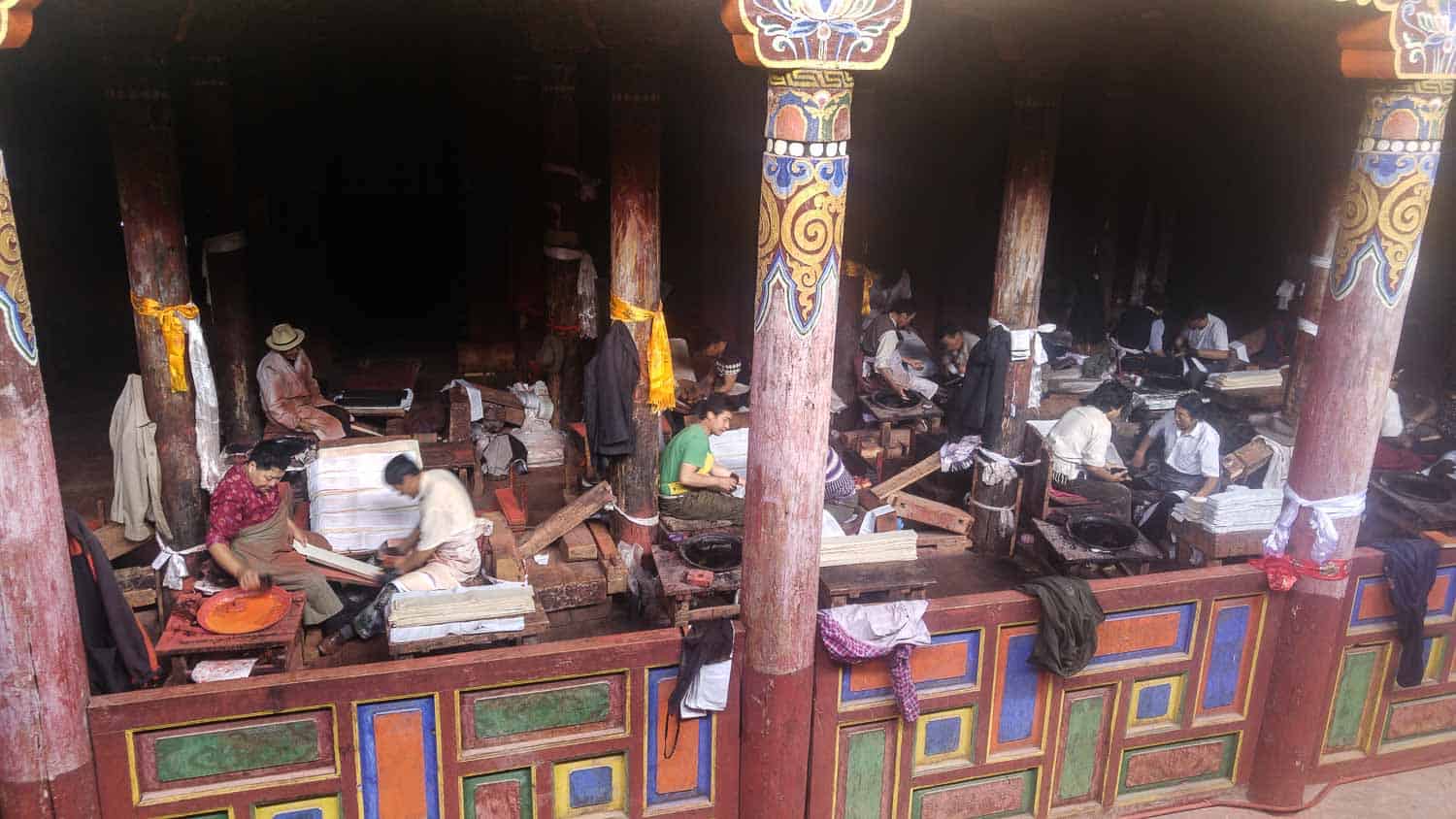
Bakong Scripture Printing Press
Bakong Scripture Printing Press has more than 290,000 wooden scripture plates in its library, which holds 555 woodblock plates, written in Hindi, Sanskrit and Tibetan, describes the history of Indian Buddhism and is the only surviving copy in the world, the collection in Dege holds an astonishing 70% of Tibet’s literary heritage still in existence.
The paper used for printing is also made inside the Bakong Scripture Printing Press with Chinese Stellera Root, also in a traditional way in a different room in the Monastery.
But before you plan your trip to this part of Sichuan, the Bakong Scripture Printing Press is only operating from 15th March to 20th September in the Tibetan calendar. And until 16.00 everyday.
Dege is located 840 km away from Chengdu, and 540km from Ganzi, while it´s possible to reach Dege from both Chengdu and Ganzi in a day, so is it not recommend do to so, due to the high elevation with the road going across the 5050 m high Tro-la Pass.
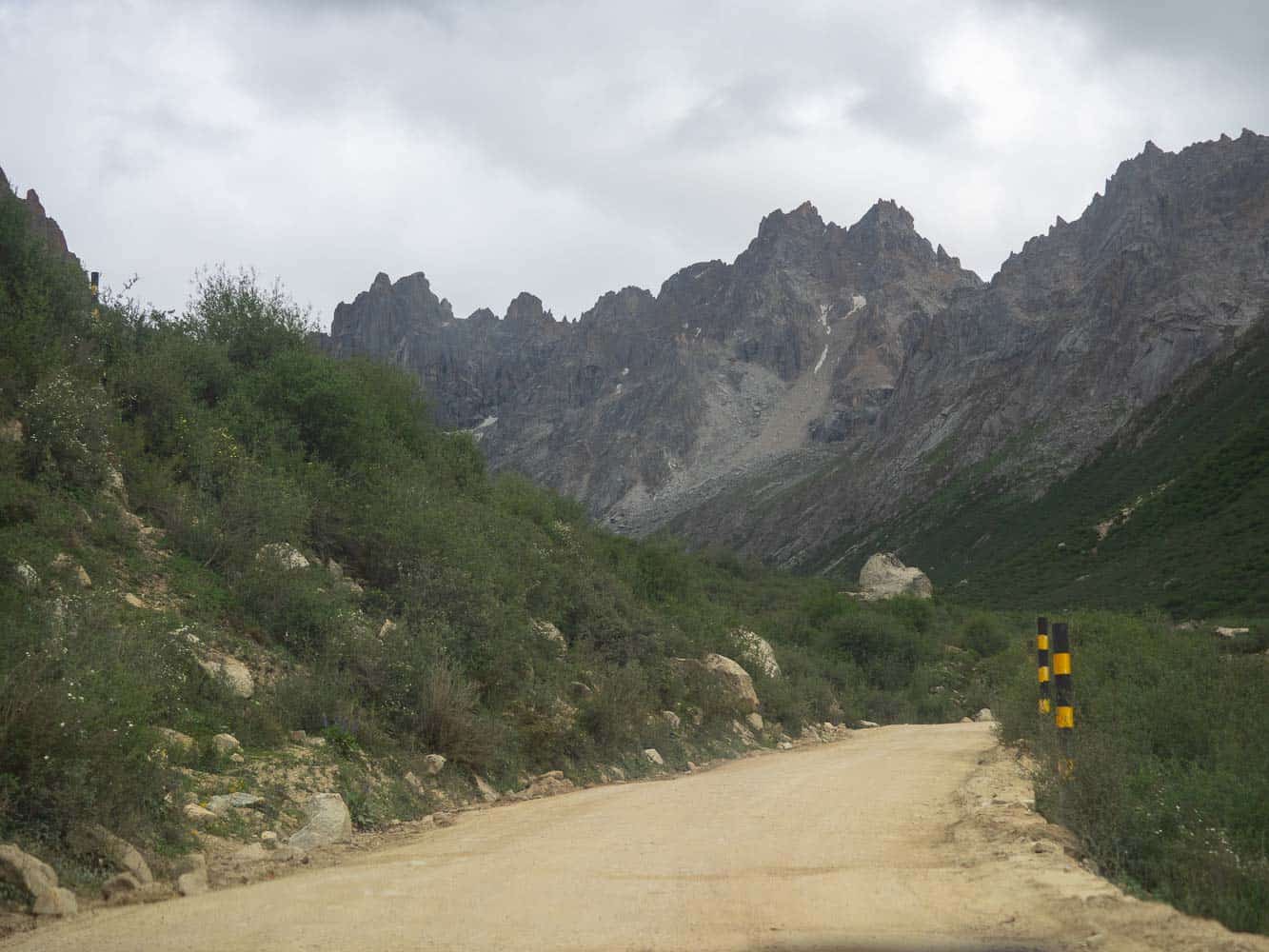
The road towards Tro-la Pass
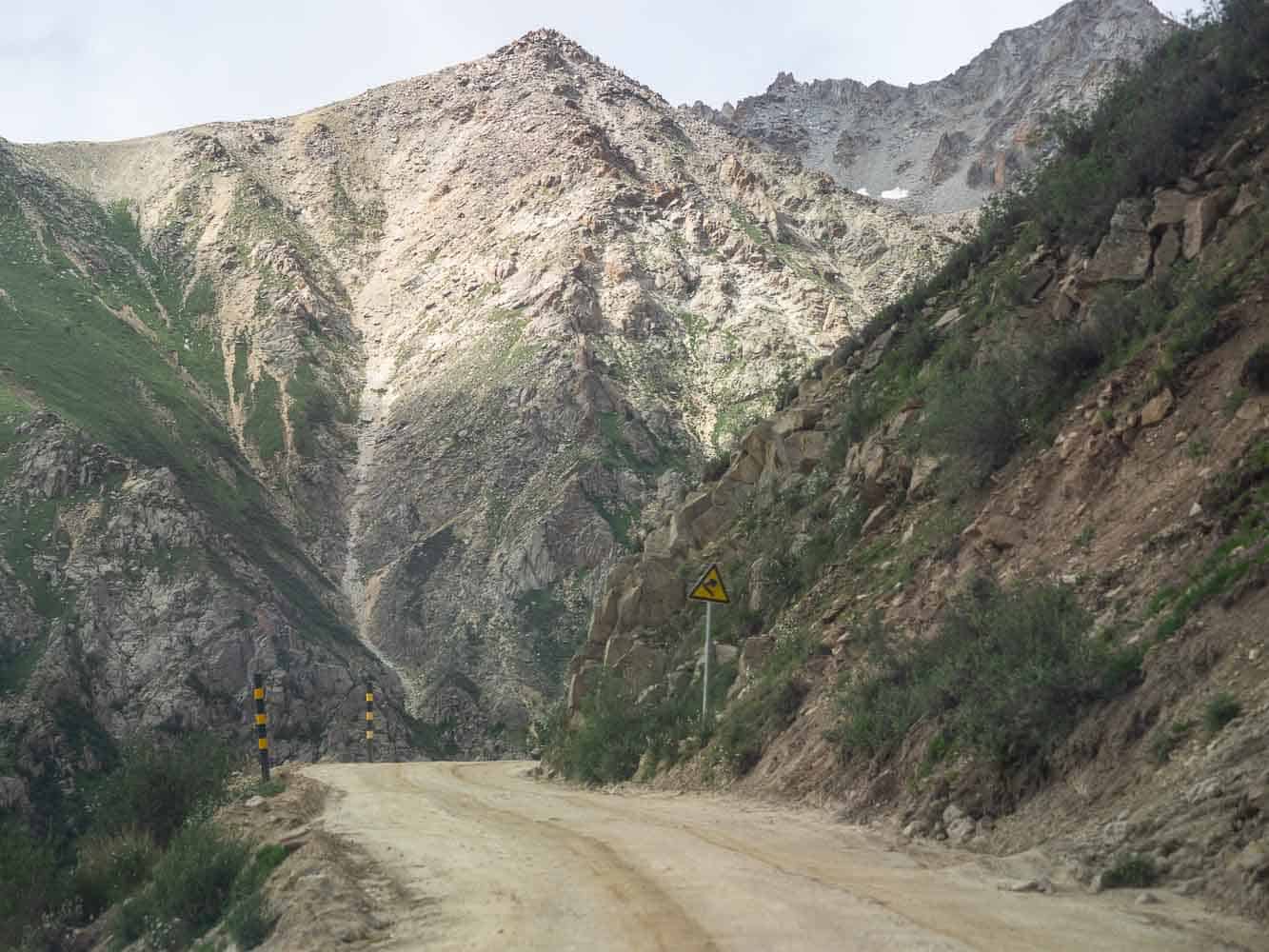
Tro-la Pass road
However, there´s now a new tunnel going through the mountain underneath the pass, one of the world´s highest tunnels, the 7 km long Cho La Mountain Tunnel, while the tunnel has cut travel time by 2 hours, so will I still recommend you to take the pass if you got your own car, the view is breathtaking.
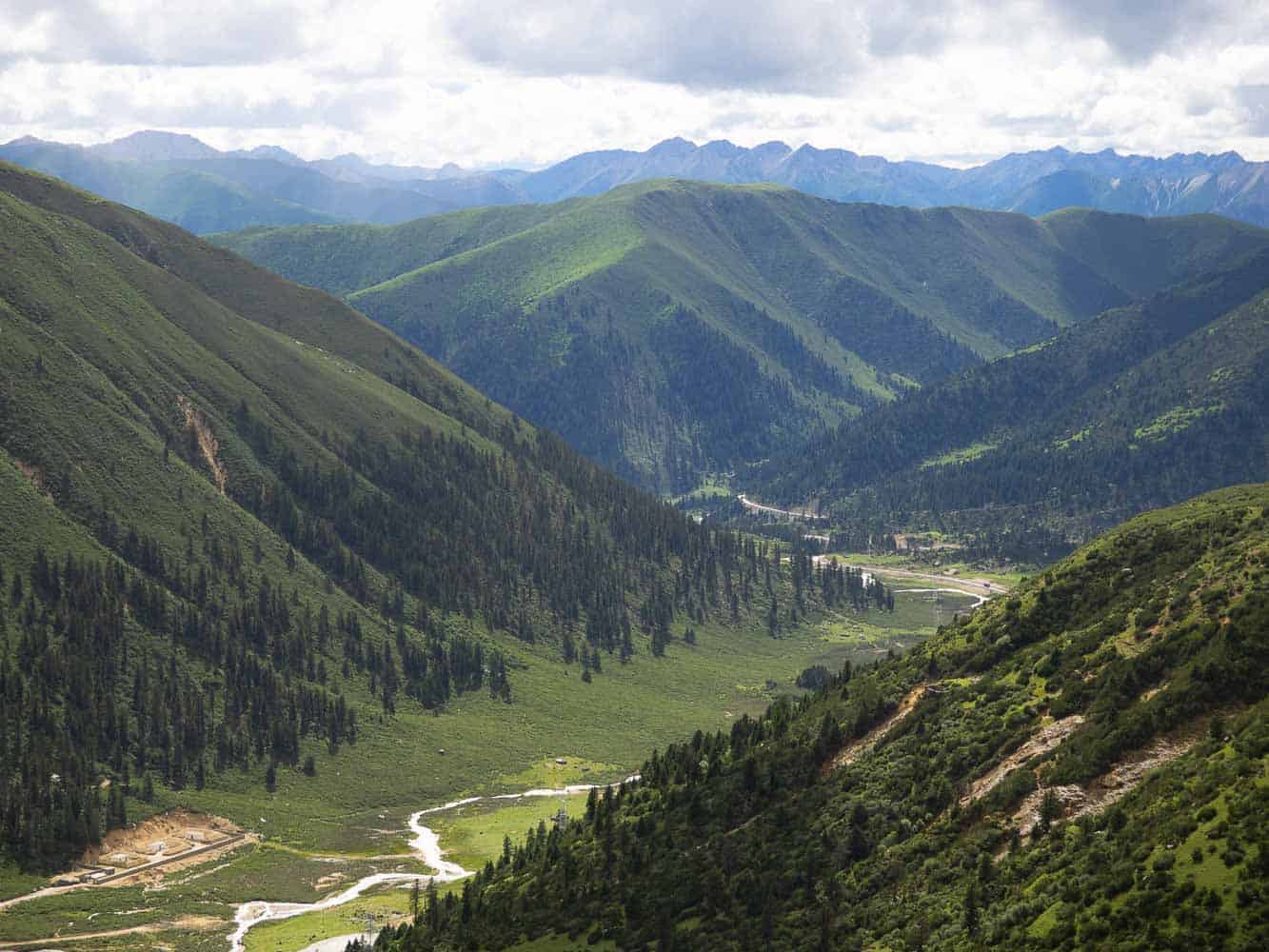
View from along the view to the top of Tro-la Pass
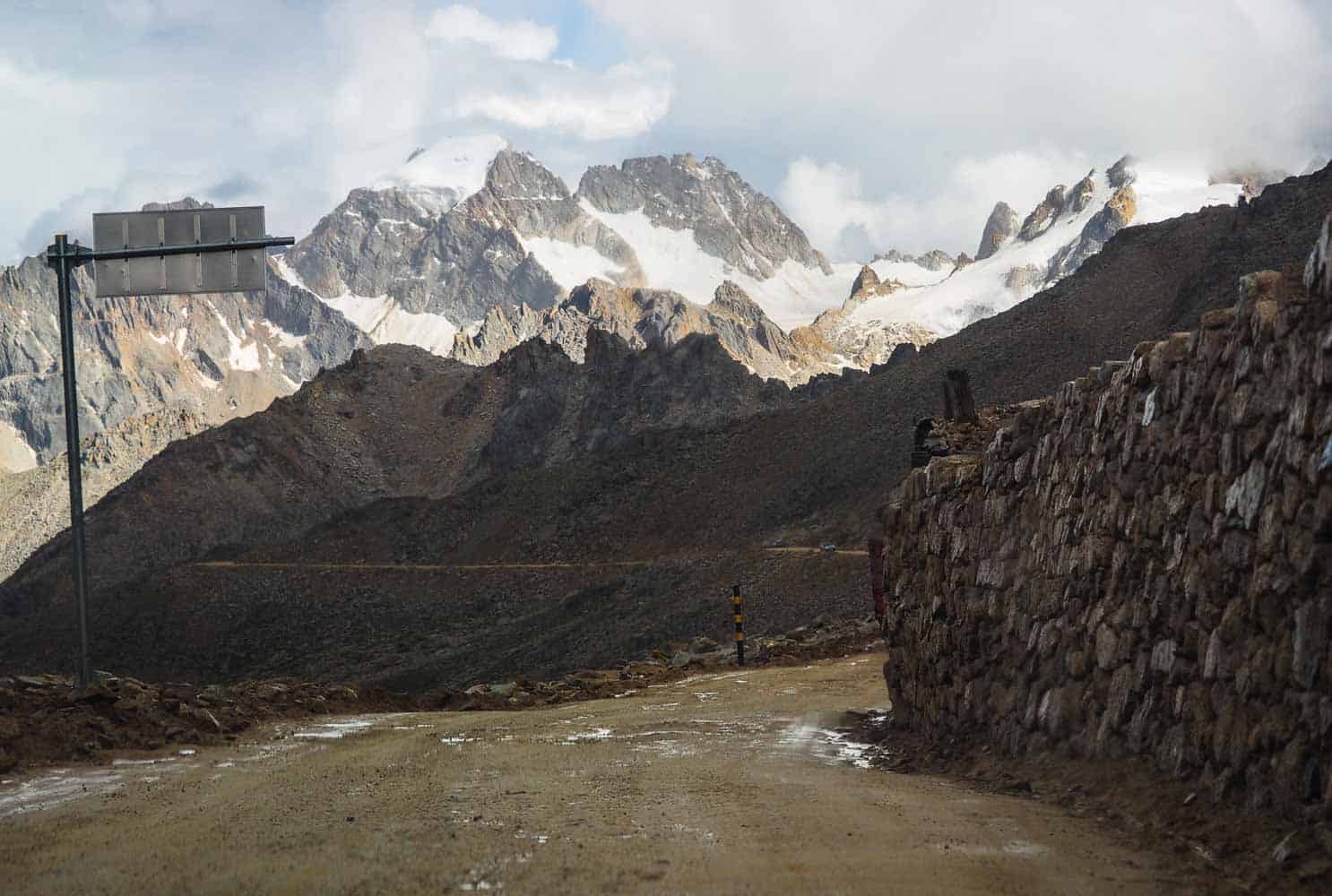
On the top of the Tro-la Pass
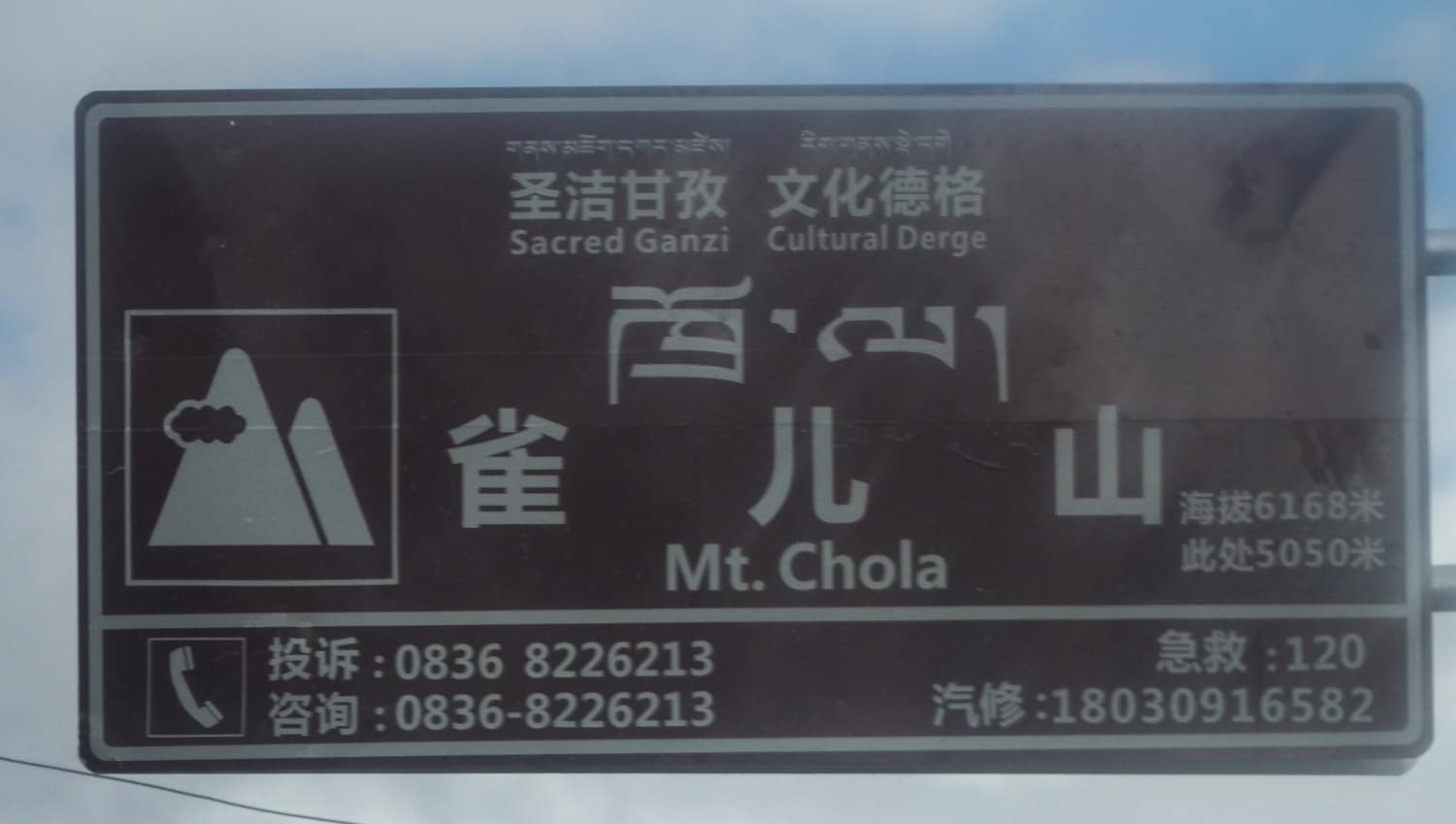
The Top of Tro-la Pass
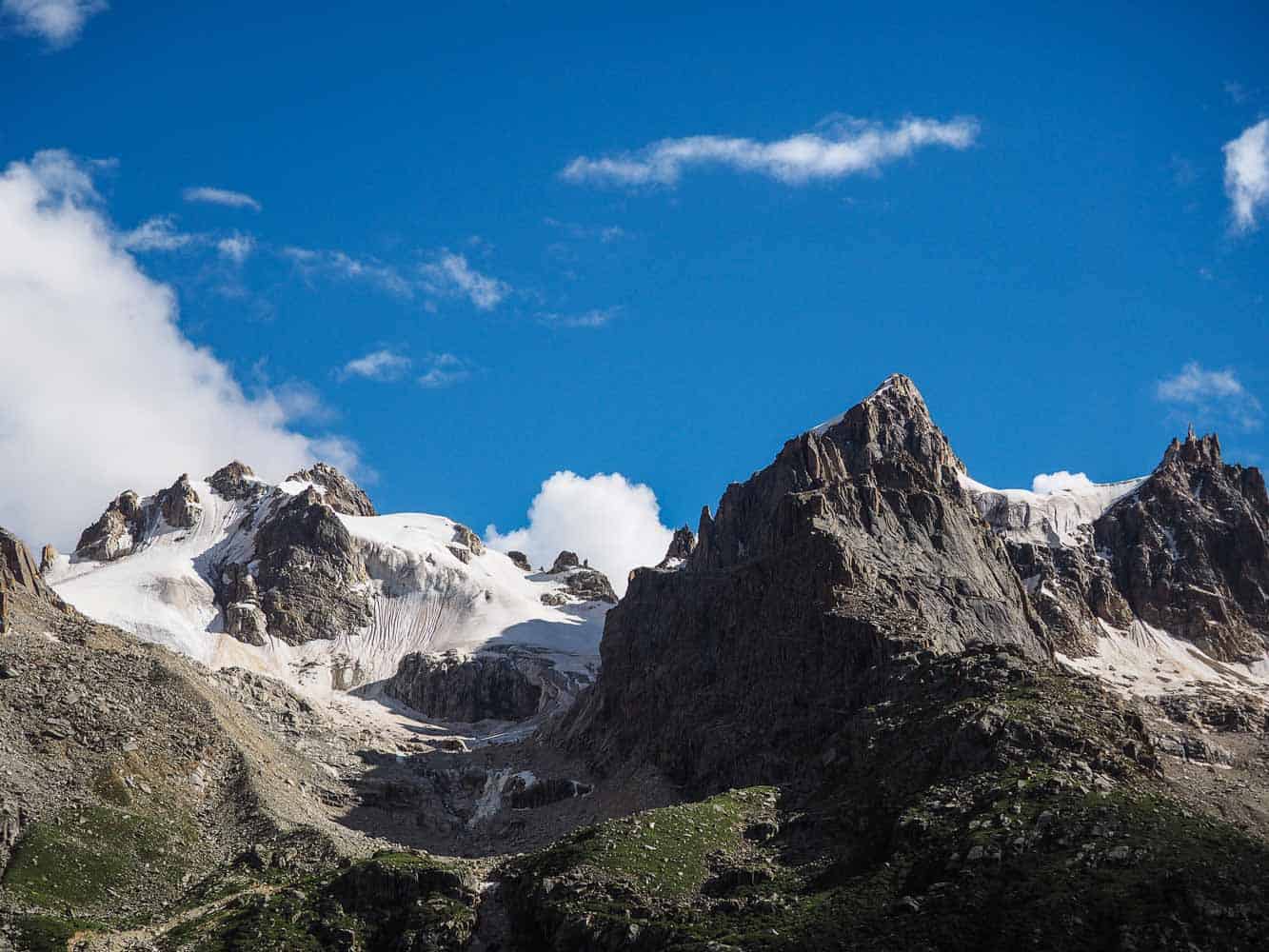
Mountains on the top of Tro-la Pass
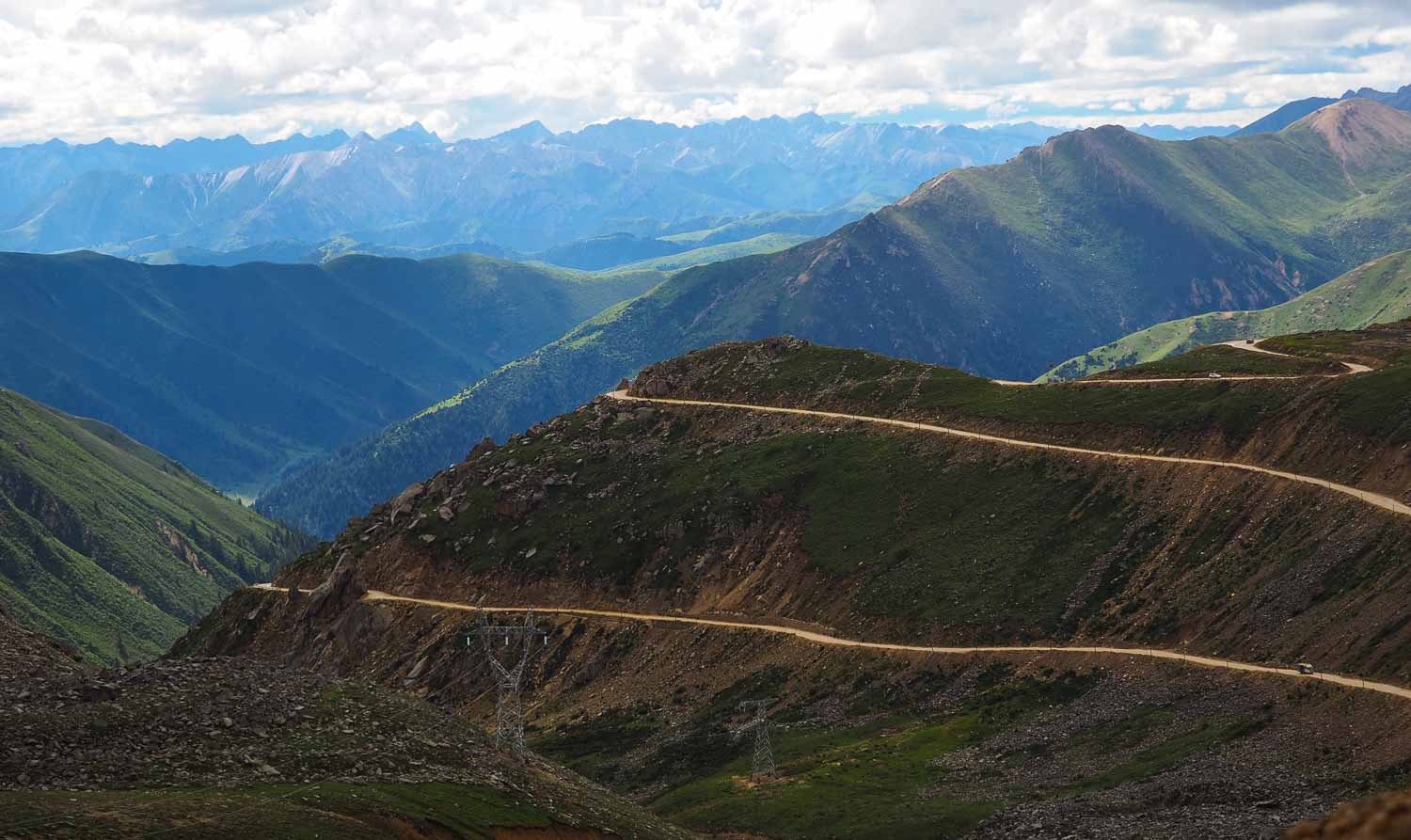
Longway down from the Tro-la Pass
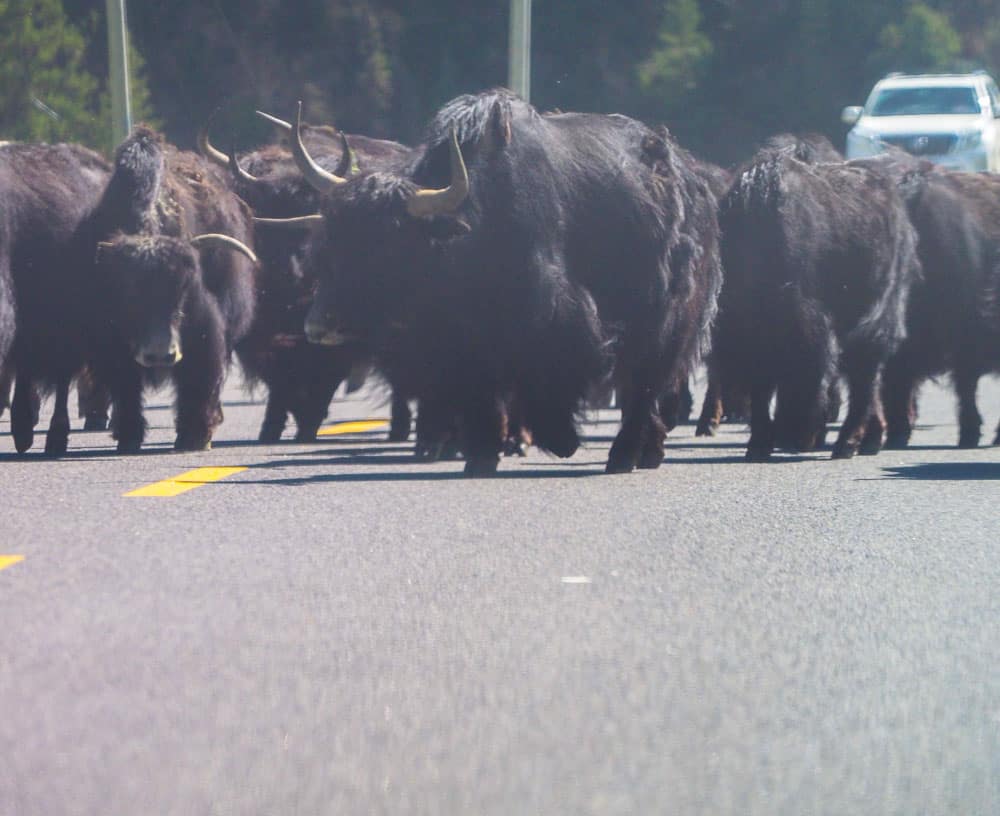
Yak traffic jams are common in Western Sichuan.
Larung Gar The Largest Buddhist Institue In The World
Larung Gar is still closed for foreigners as it has been since June 2016.
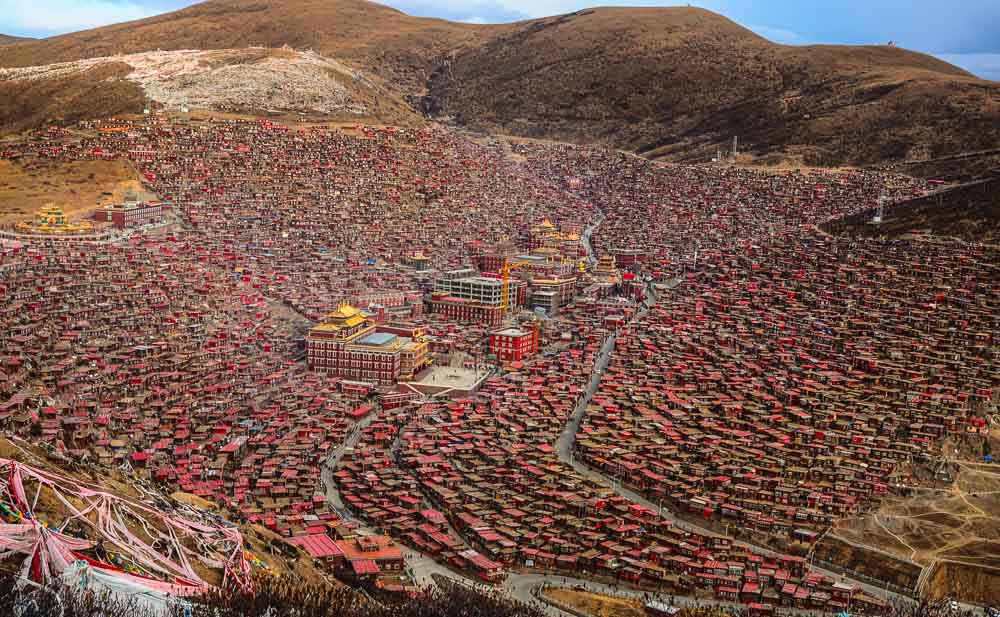
Larung Gar in 2014
Larung Gar, the world´s Largest Buddhist institute is an one of kind place in the world; there´s nowhere like this.
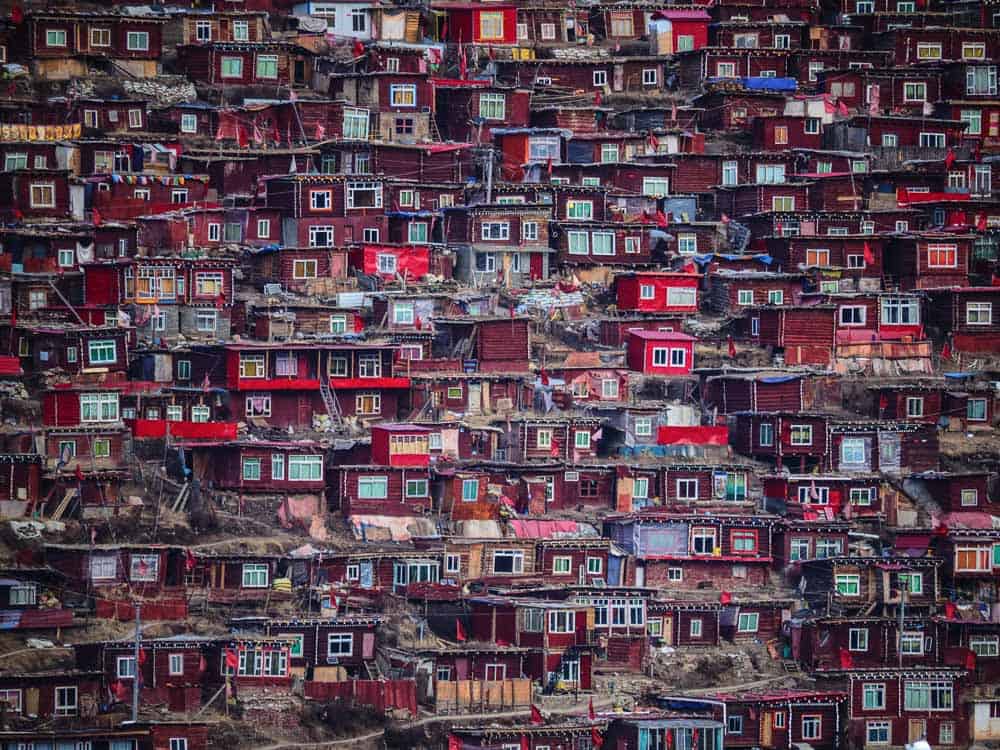
Larung Gar
But unfortunately, so have Larung Gar lost a lot of its charm after big parts of it was demolished by the Chinese government, and a new fancy hotel was built in the middle of Larung Gar together with a few other strange structures that don’t belong in Larung Gar.
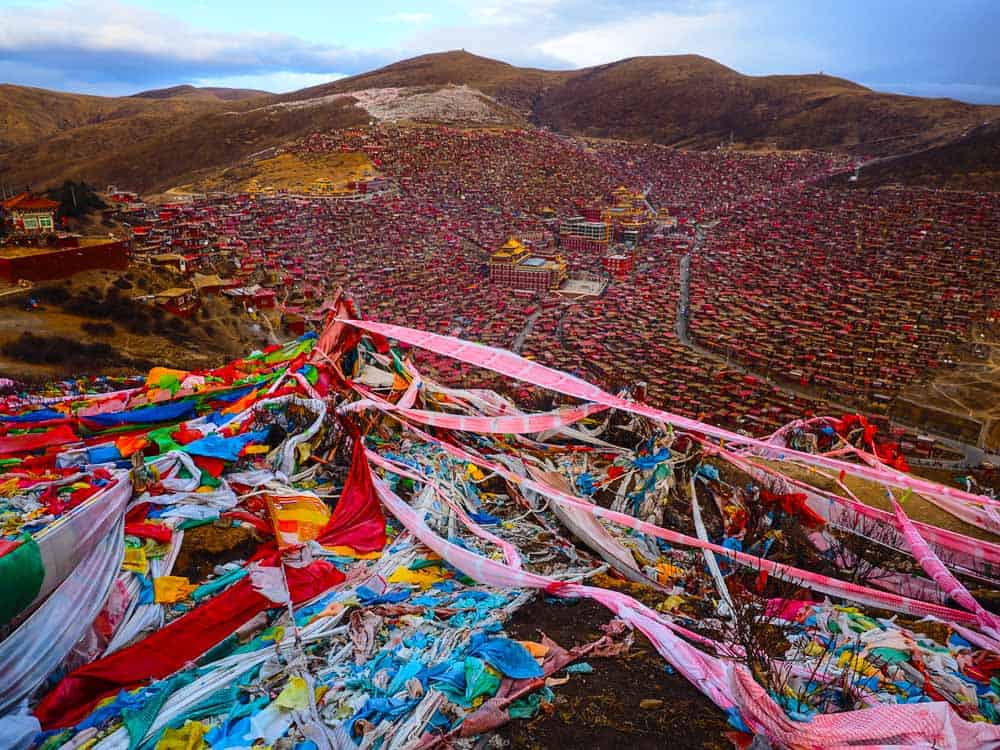
Larung Gar in 2014
Larung Gar Buddhist Academy, also known as the Sêrtar/Seda/Serthar Buddhist Institute, which sits in the Larung Valley at an elevation of 4,000 meters, about 15 km from the town Sêrtar, in Sertar County, Garze Prefecture in the traditional Tibetan region of Kham, in the far part of western Sichuan.
Travelling to Larung Gar is a real adventure; to road here is by far the worst road I’ve ever travelled on, anywhere in the world.
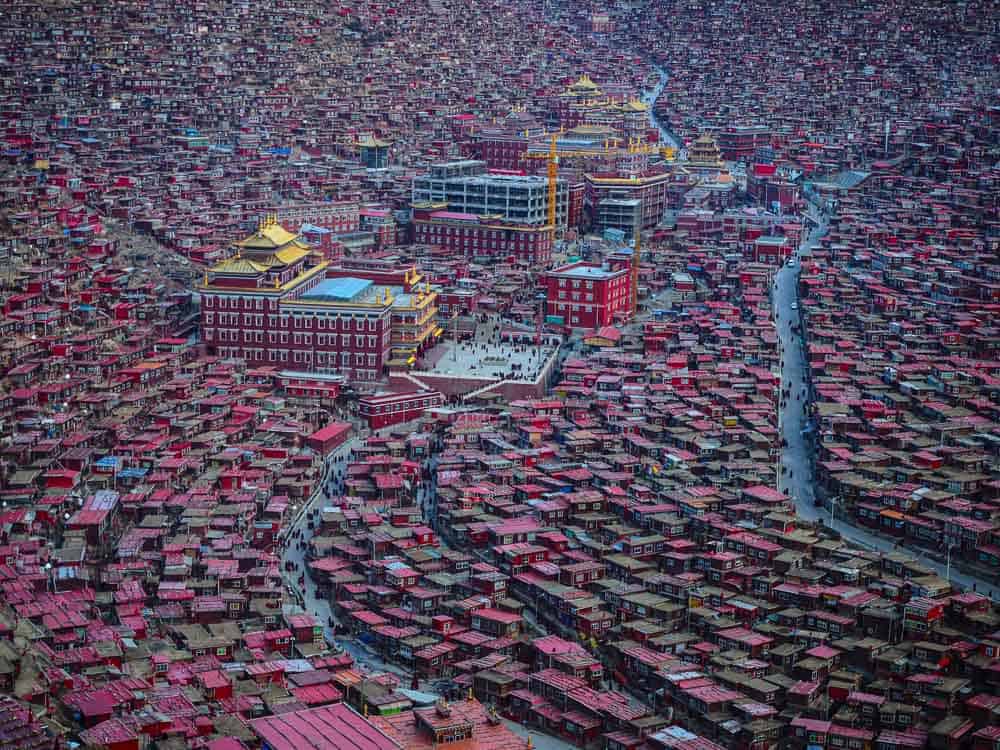
Larung Gar
Yarchen Gar The World´s Largest Nunnery
While Lurang Gar is the world´s largest Buddhist institute, so are Yarchen Gar, the world´s largest Nunnery, which officially is home 10 000 female Buddhist Nuns. But according to the locals, so are the numbers in fact 20 000.
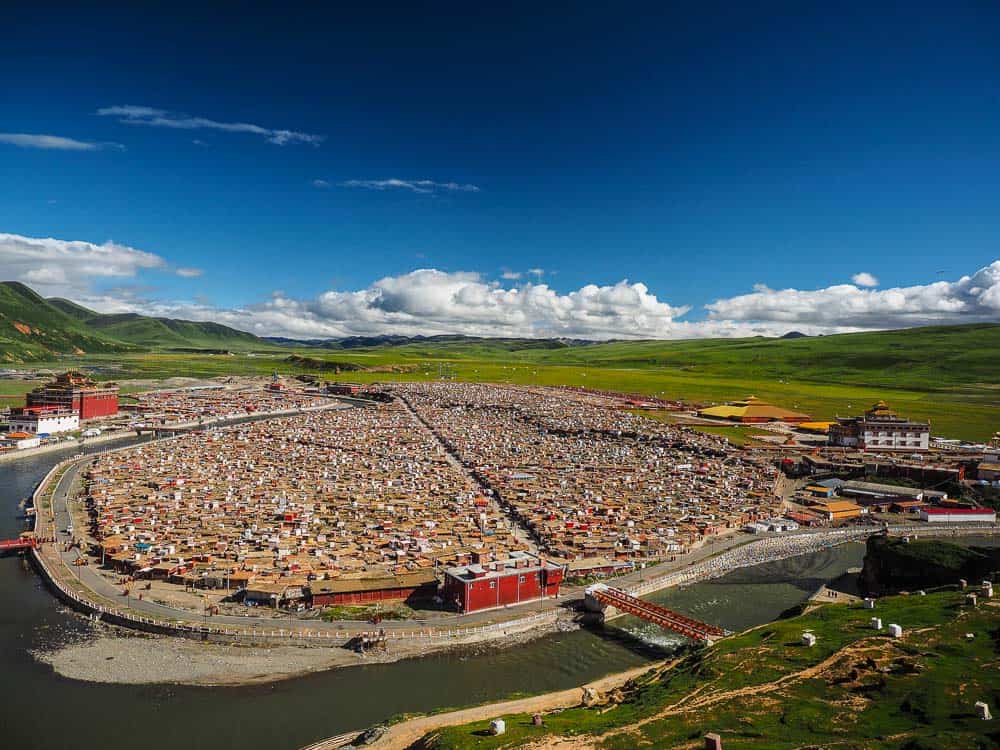
Overview over Yarchen Gar home to 10 000 female nuns
And unfortunately, so have also big parts of Yarchen Gar been demolished during the recent years.
Sadly so have more than 50% of Yarchen Gar now been destroyed also here to make space for tourist facilities.
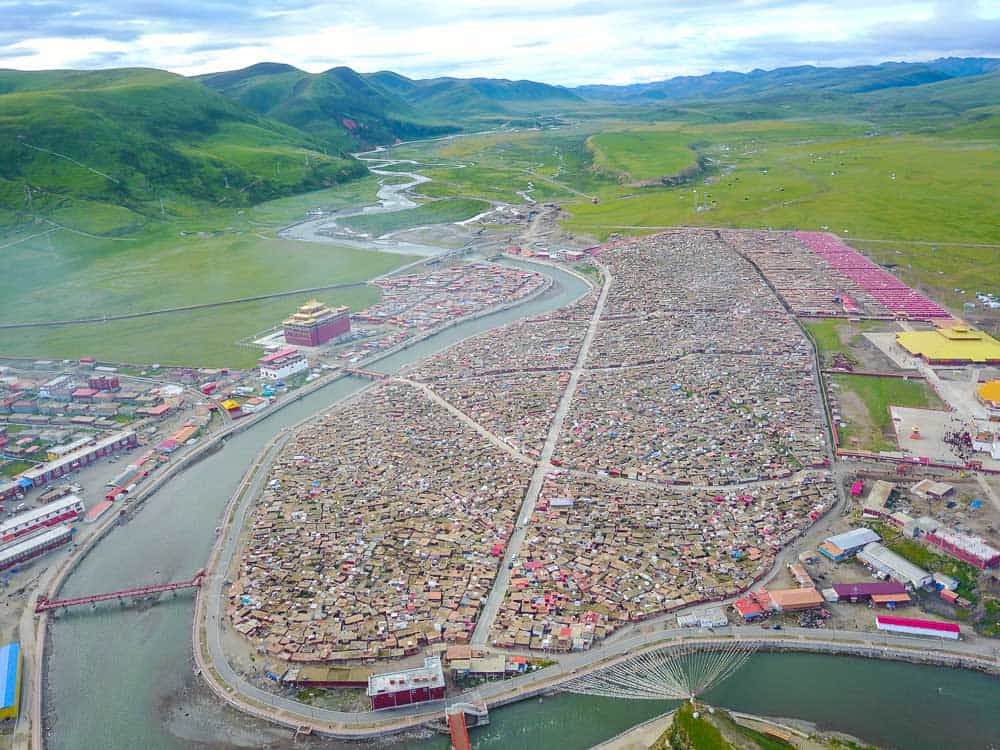
Yarchen Gar From Above
To turn parts of Yarchen Gar into tourist facilities instead of keeping the local housings for the female Buddhist Nuns.
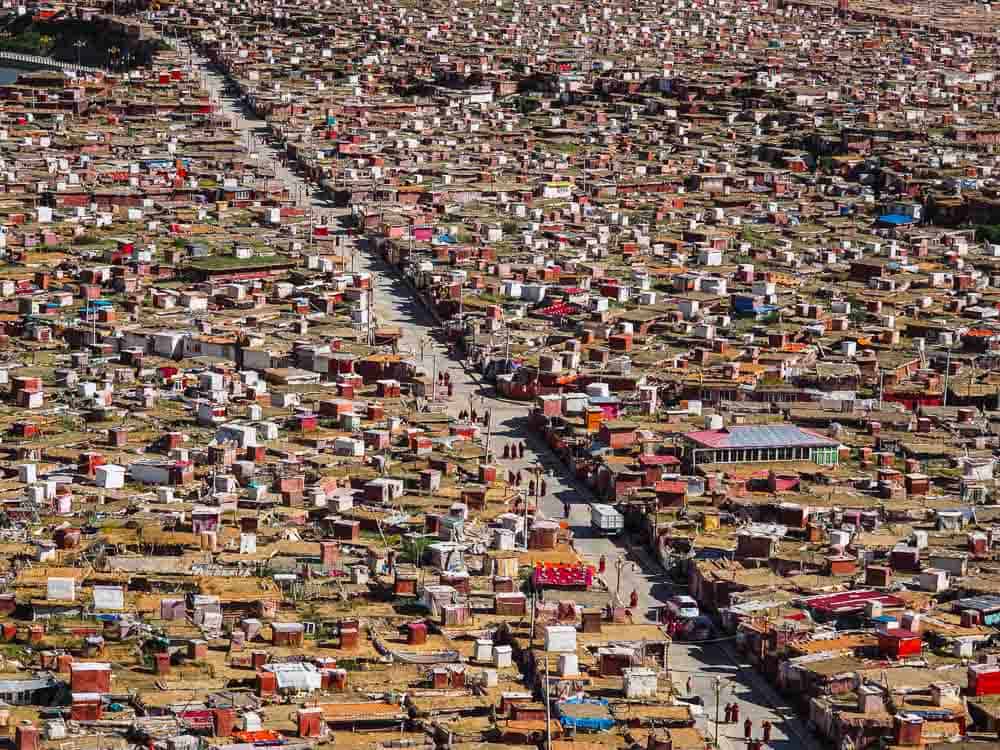
Housing areas in Yarchen Gar
While most of the monks/nuns in Larung Gar are there for study, so are many of the monks/nuns at Yarchen Gar here for meditation.
You will see tiny white huts in the surrounding hills and around the hill leading to a giant golden statue of Guru Rinpoche.
Nuns will stay in their tiny meditation huts 24/7 and up to 100 days. That´s more than three months! Only leaving for necessary toilet breaks. Food and drinks are brought to them by fellow nuns.
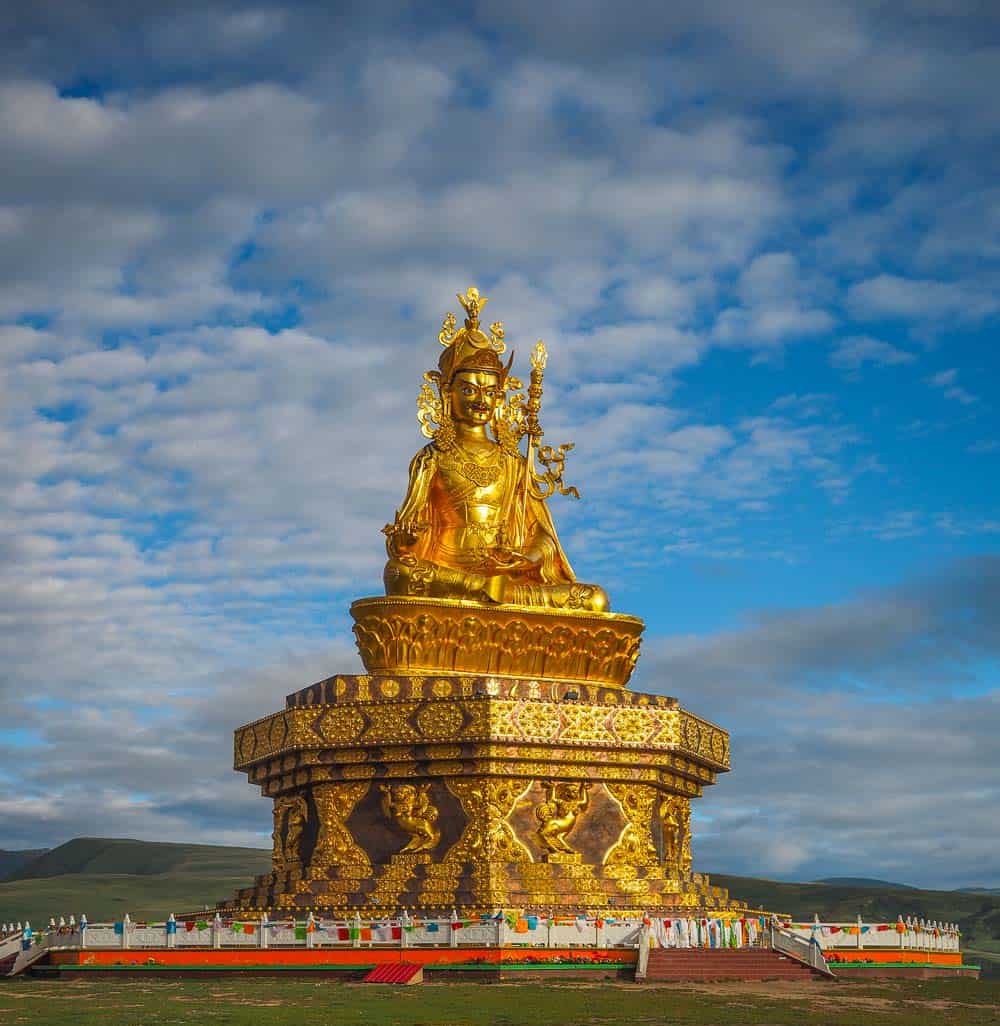
The huge golden Guru Rinpoche statue
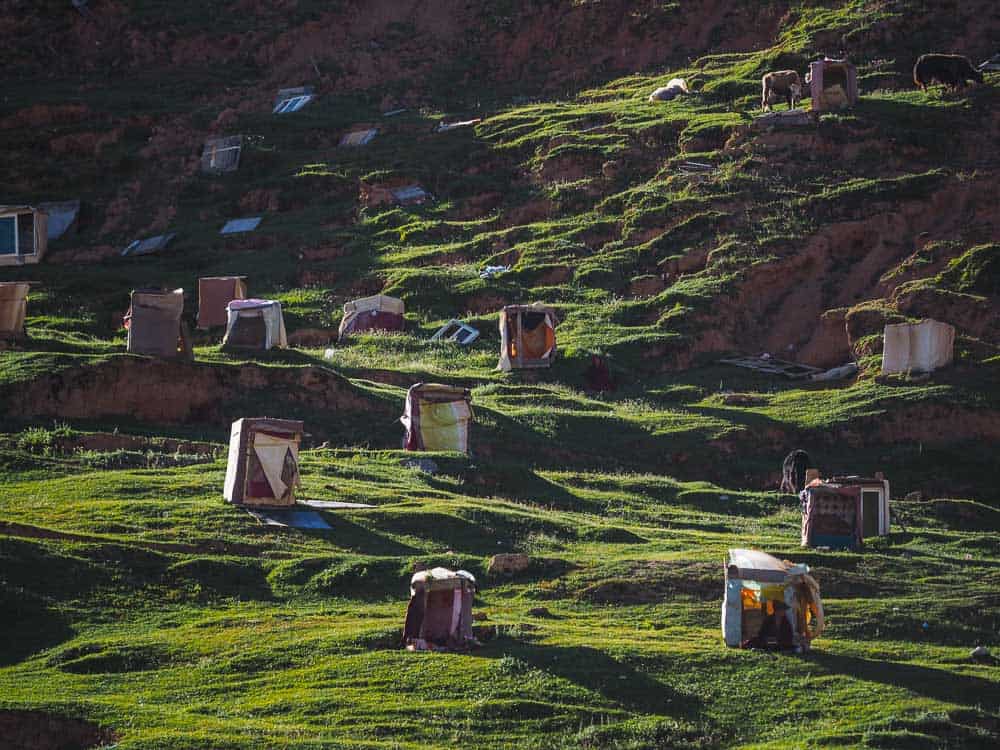
A few of the meditation huts
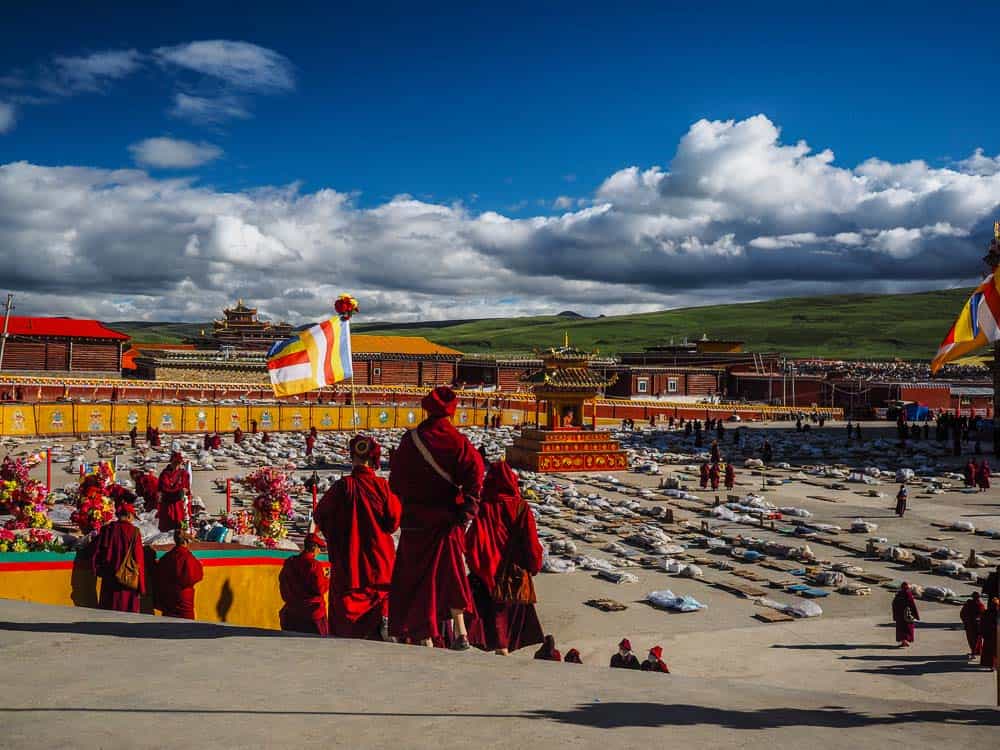
Nuns going to the Monastery
Reaching Yarchen Gar is a three day long and bumpy ride from Chengdu with public transportation; you might be able to reach it in two very long days with your own transport.
Palyul Monastery
The Palyul Namgyal Jangchub Choling Monastery or easier known as just Pelyul Monastery, is one of the six most important monasteries in Nyingma, the oldest of the four major schools of Tibetan Buddhism.
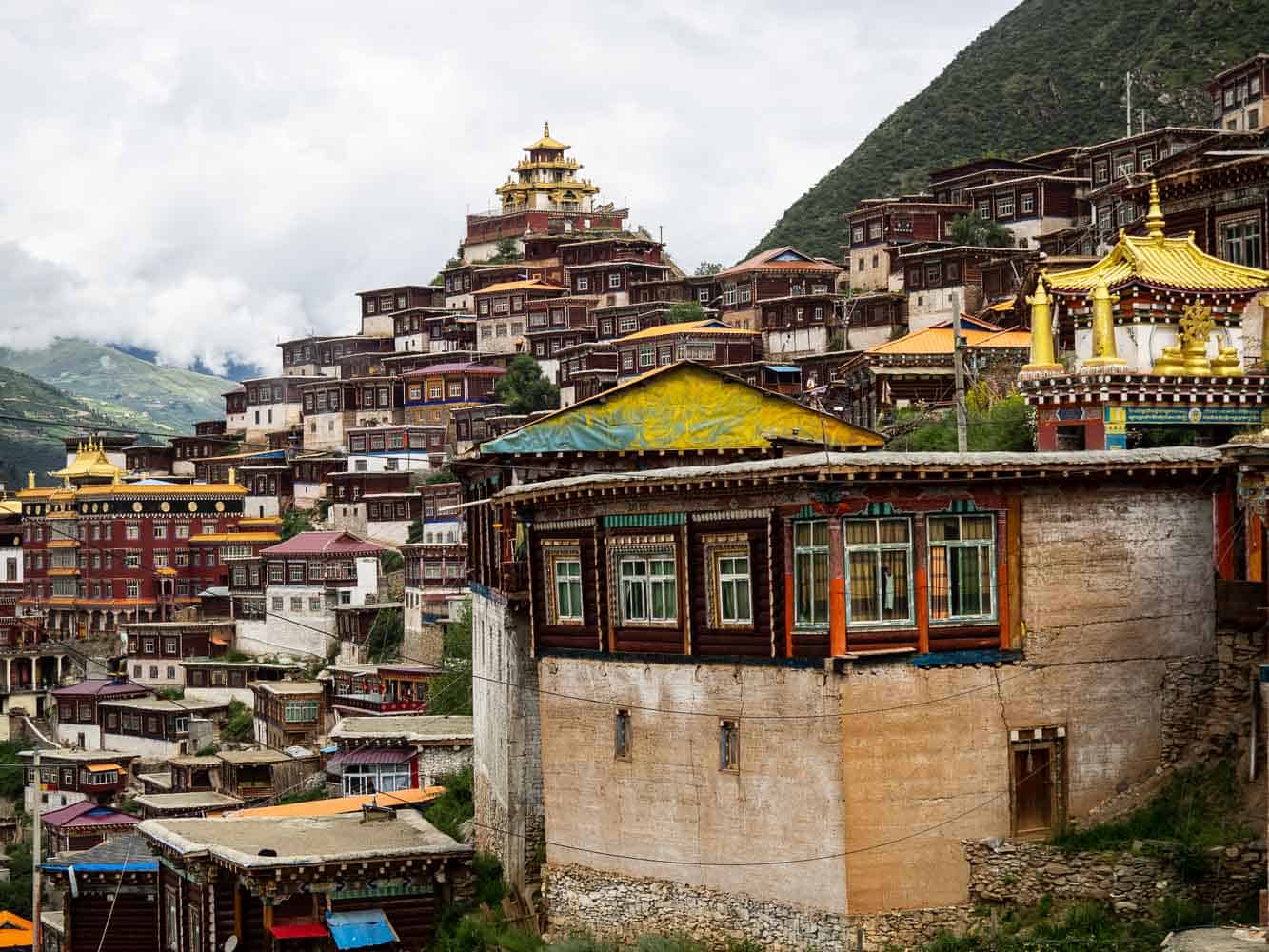
The remote Palyul Monastery
The Pelyul Monastery was founded in 1665, and it was one of the most renowned monasteries in Tibet until the Chinese Cultural Revolution, which destroyed and damaged hundreds of Monasteries and temples.
Also, the Pelyul Monastery was almost completely abandoned until 1982 when Penor Rinpoche, the 11th throne holder of the Palyul monastery for the first time since the begging of the Cultural Revolution.
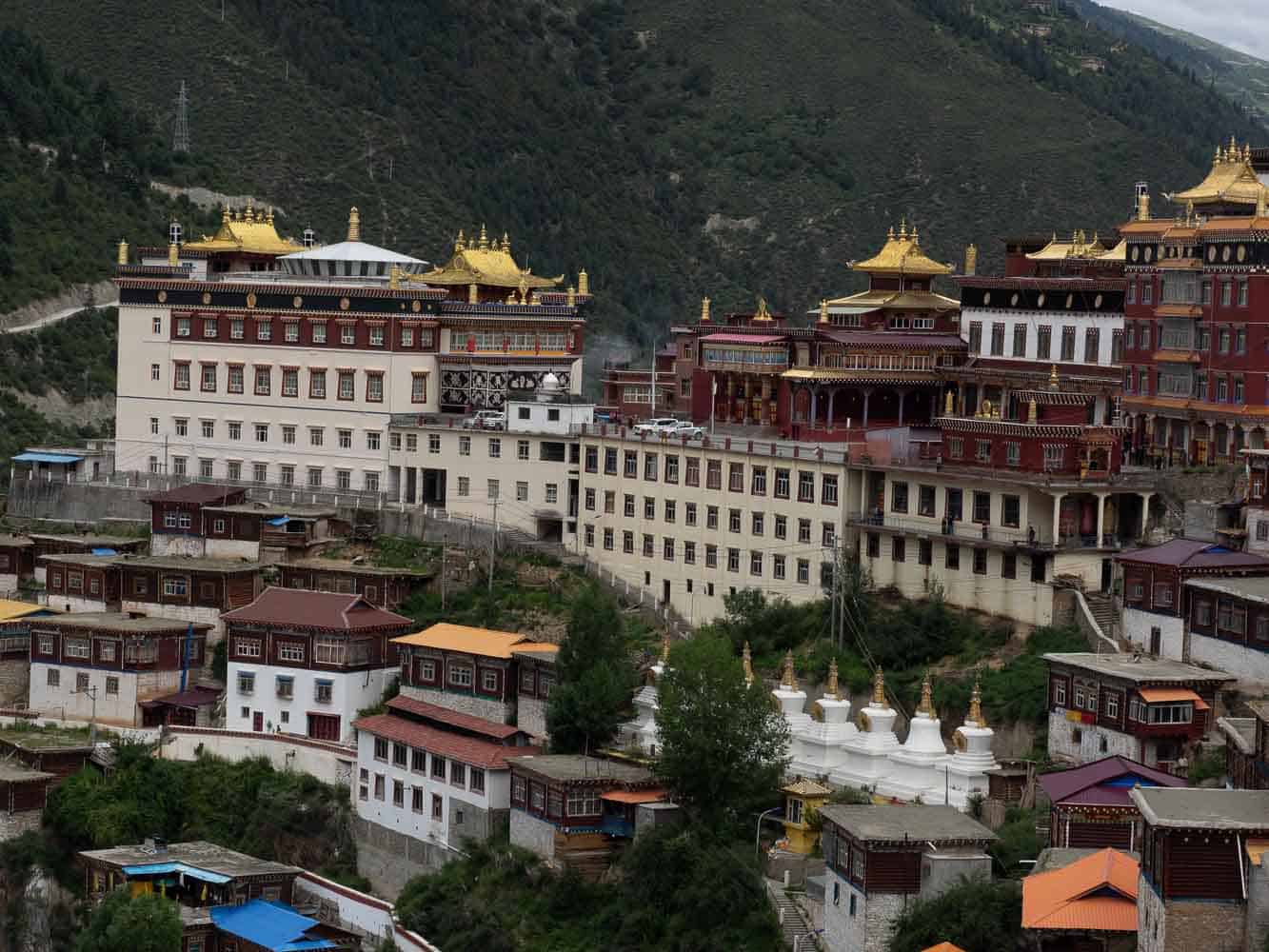
The Pelyul Monastery
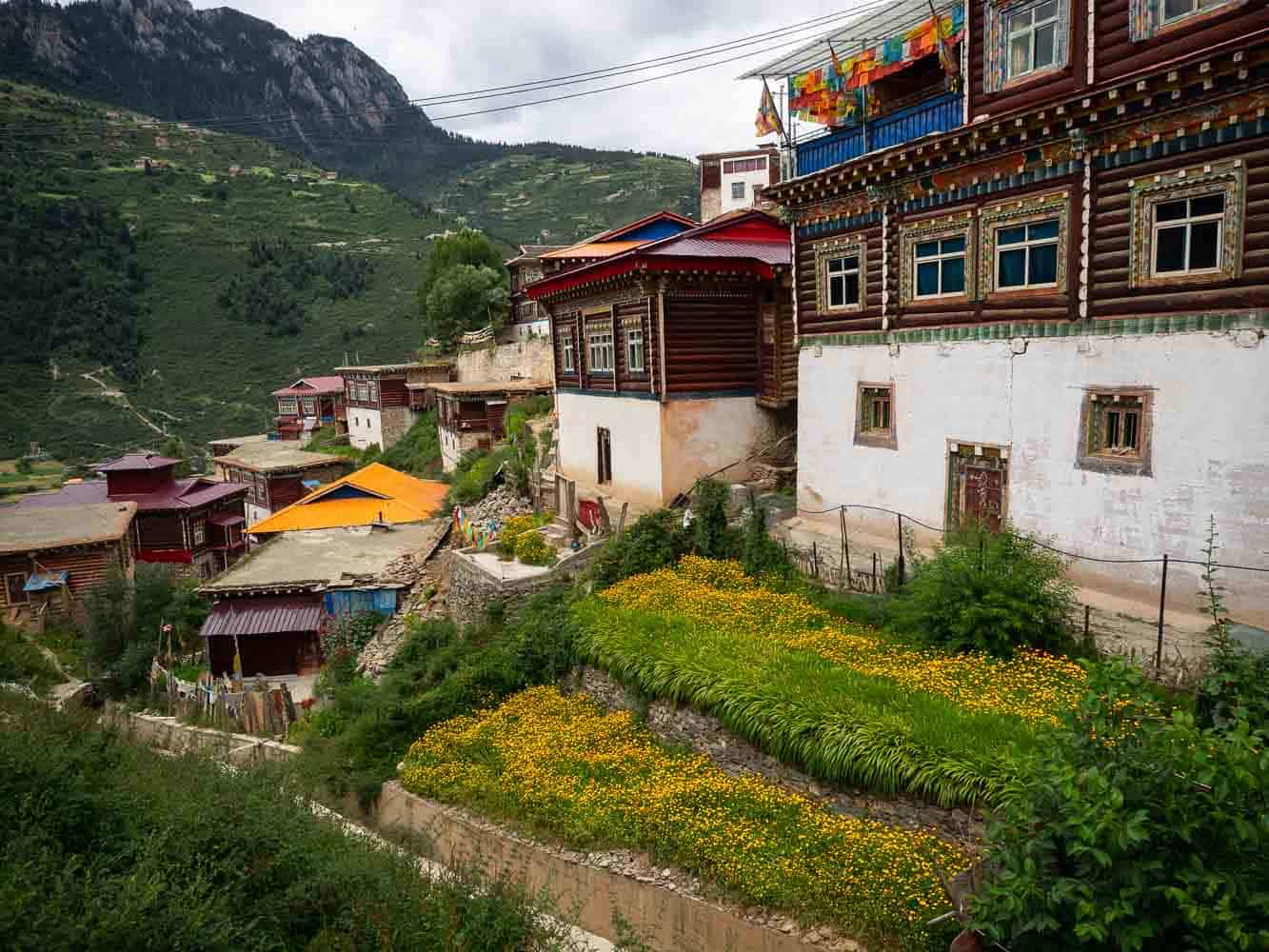
The living area around Palyul Monastery
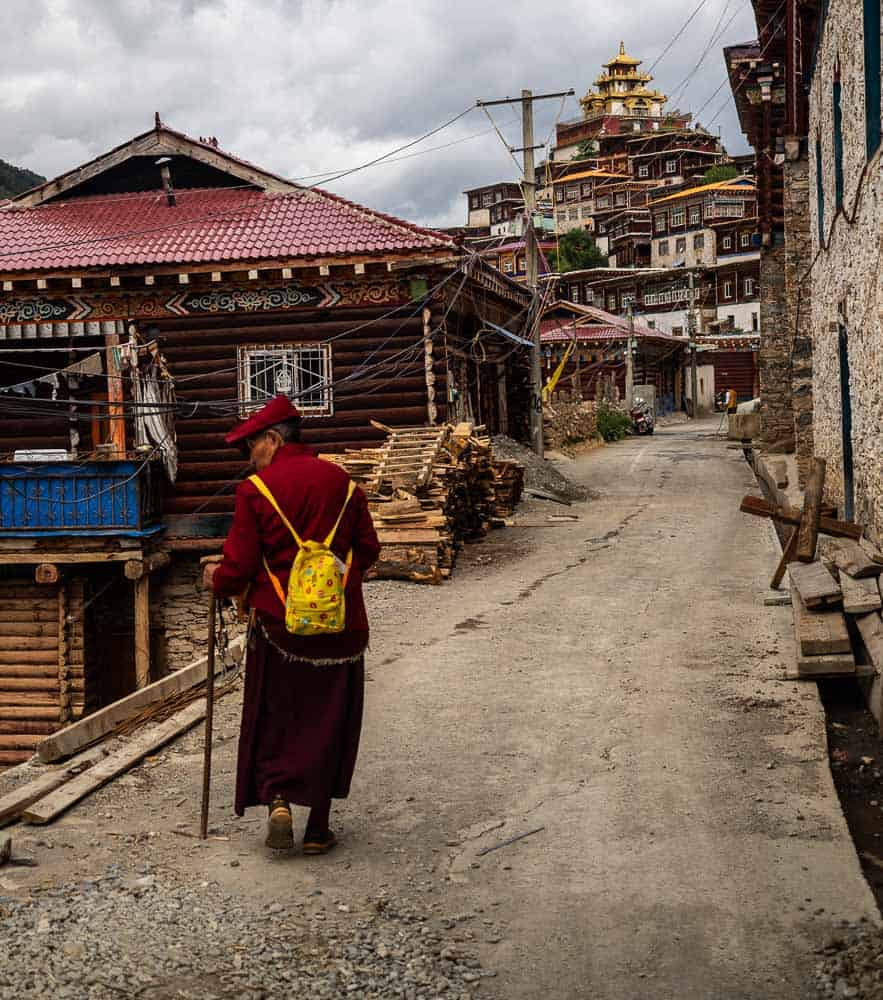
A local monk walking towards Palyul Monastery
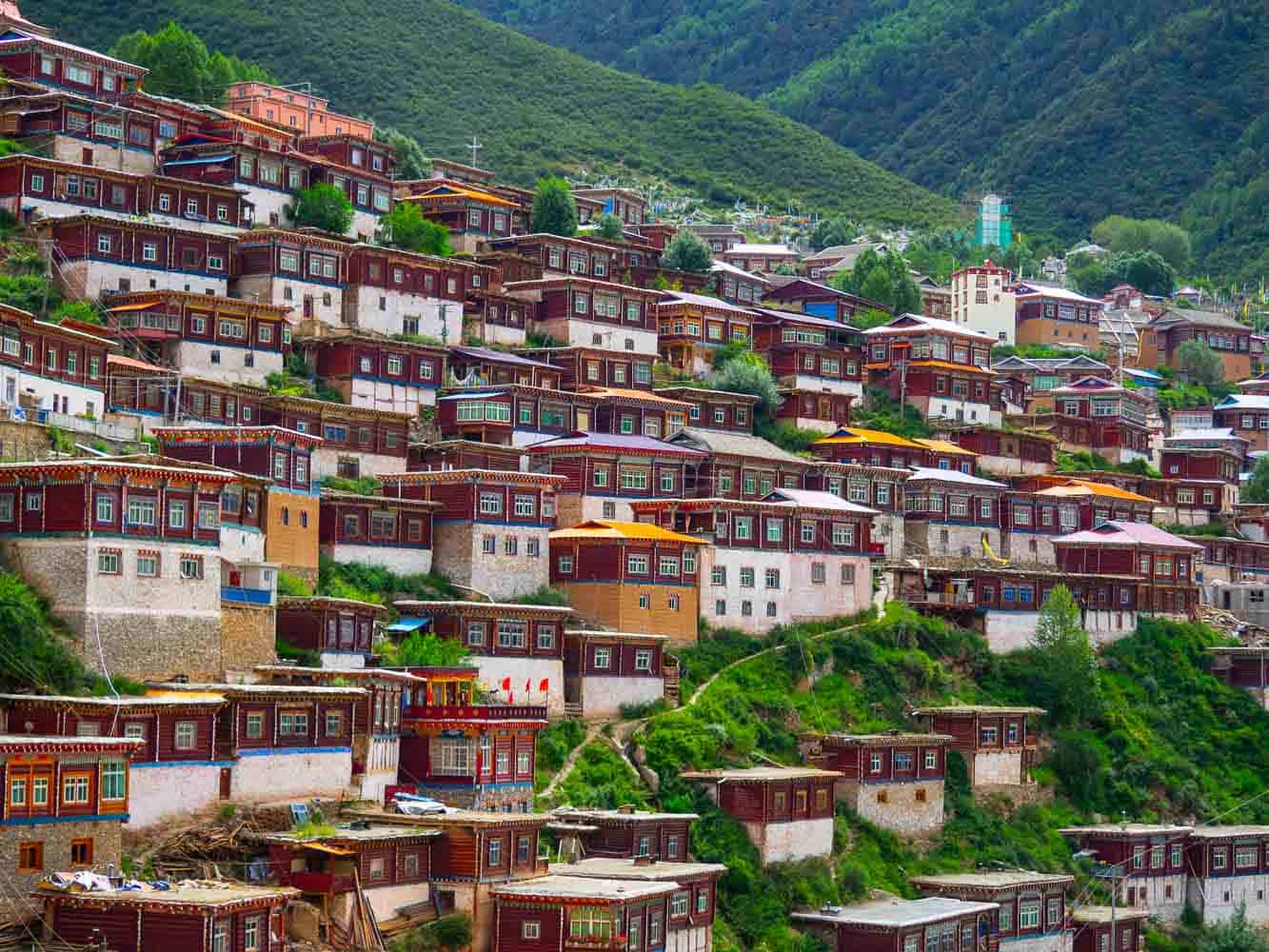
Local houses around the monastery
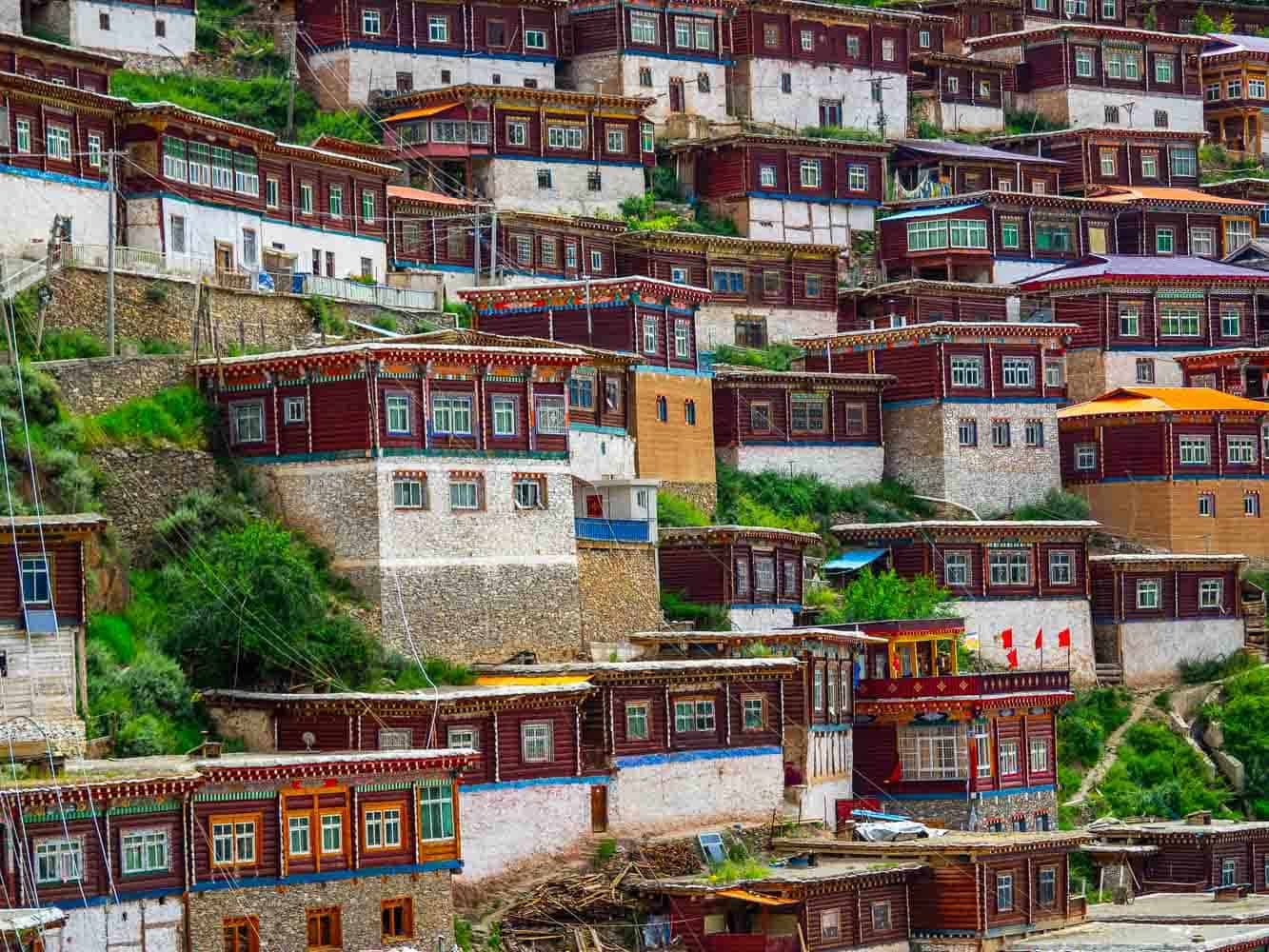
Local housing around Palyul Monastery
Palyul Monastery is only reachable with small shared vans from Dege or with your own transportation.
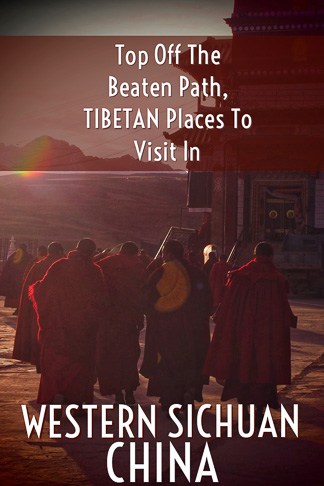
Top off the beaten places to visit in western Sichuan China

Bryan
Monday 8th of August 2022
Great read!